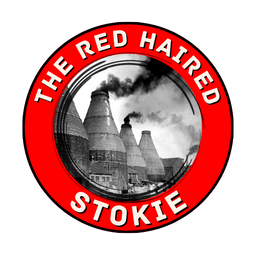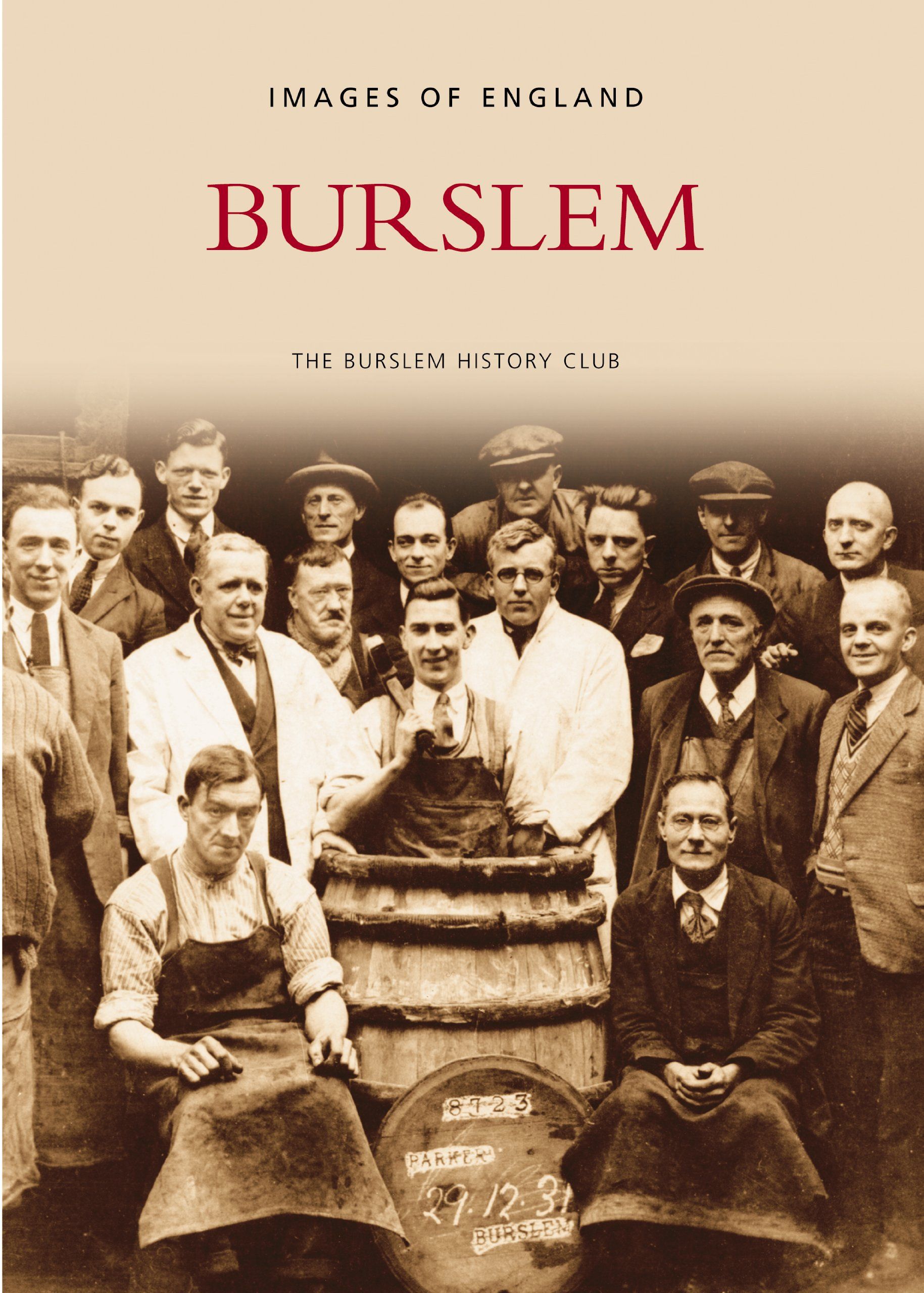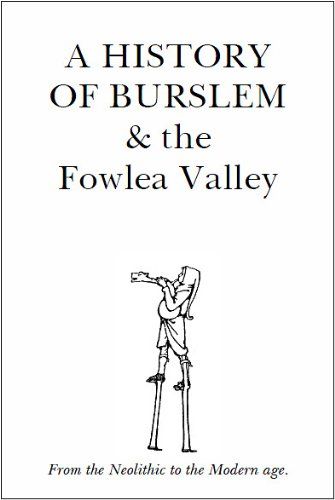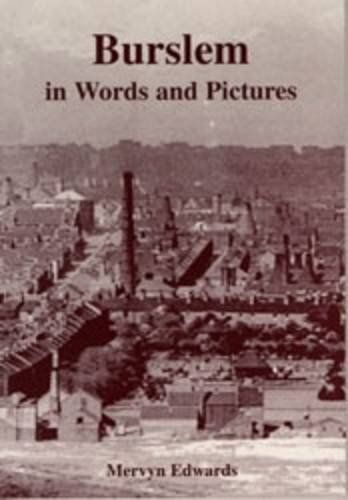Burslem, Stoke on Trent, is known as the 'Mother Town' of the Potteries. This small town has a rich history and heritage that dates back centuries. It was once a thriving industrial centre, with many pottery factories and coal mines.
From its humble beginnings in the 17th century to its current status as one of Stoke on Trent's most important towns, Burslem has an interesting history that continues to fascinate visitors today.
The town has a long and fascinating history, from its early days as an isolated farming community to its rise as the centre of pottery production in the 18th century. Burslem was home to many famous potters, including Josiah Wedgwood, who helped to make it one of the most important towns in The Potteries.
I took a walk around Burslem to see just what has changed over the last 100 years or so. Let's have a look at just what has changed.
I have repaired, edited and upscaled the old photographs so that we can see the maximum amount of detail in them. So please, if you do share them, could you give me credit for them? Because it took me ages! Thank you.

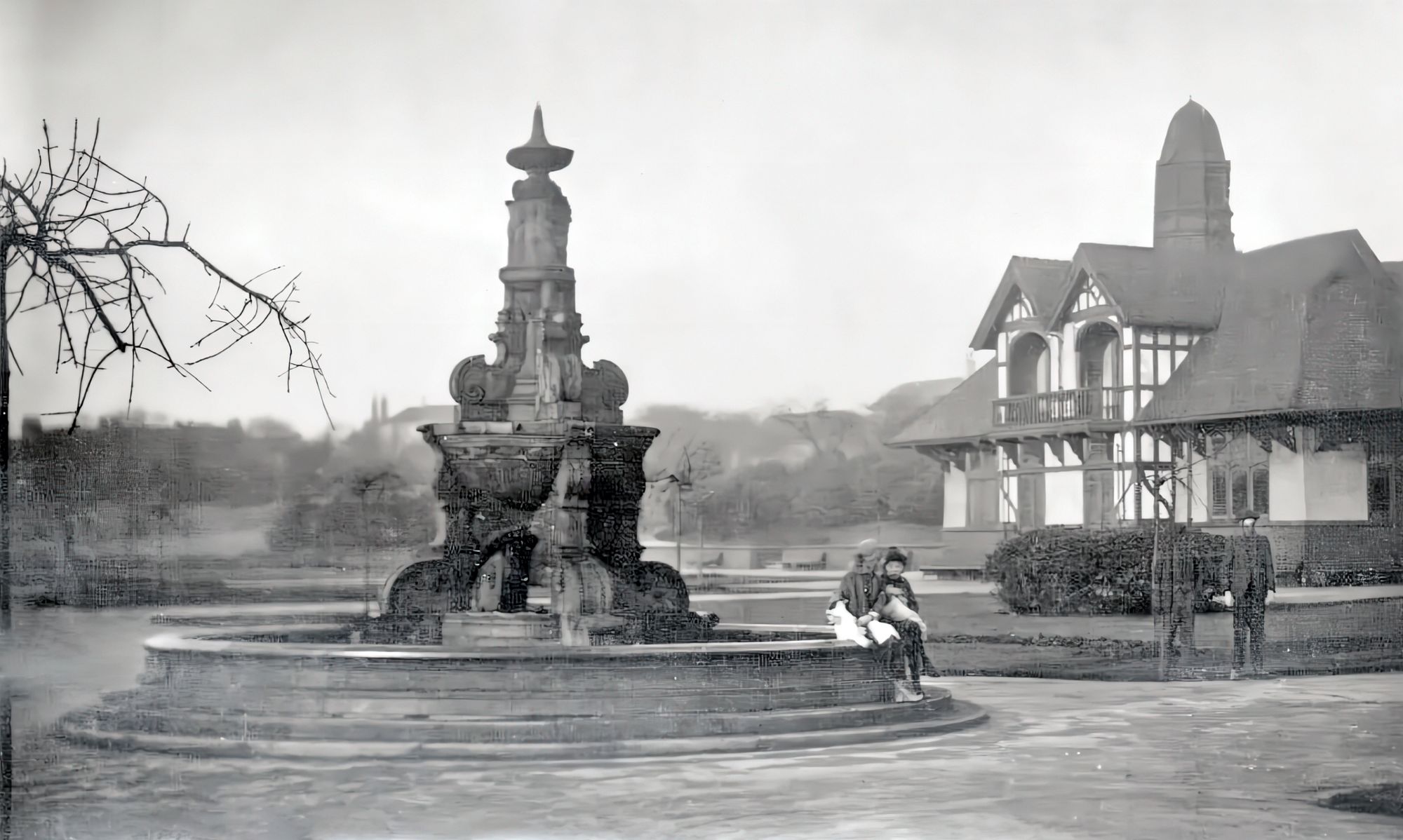
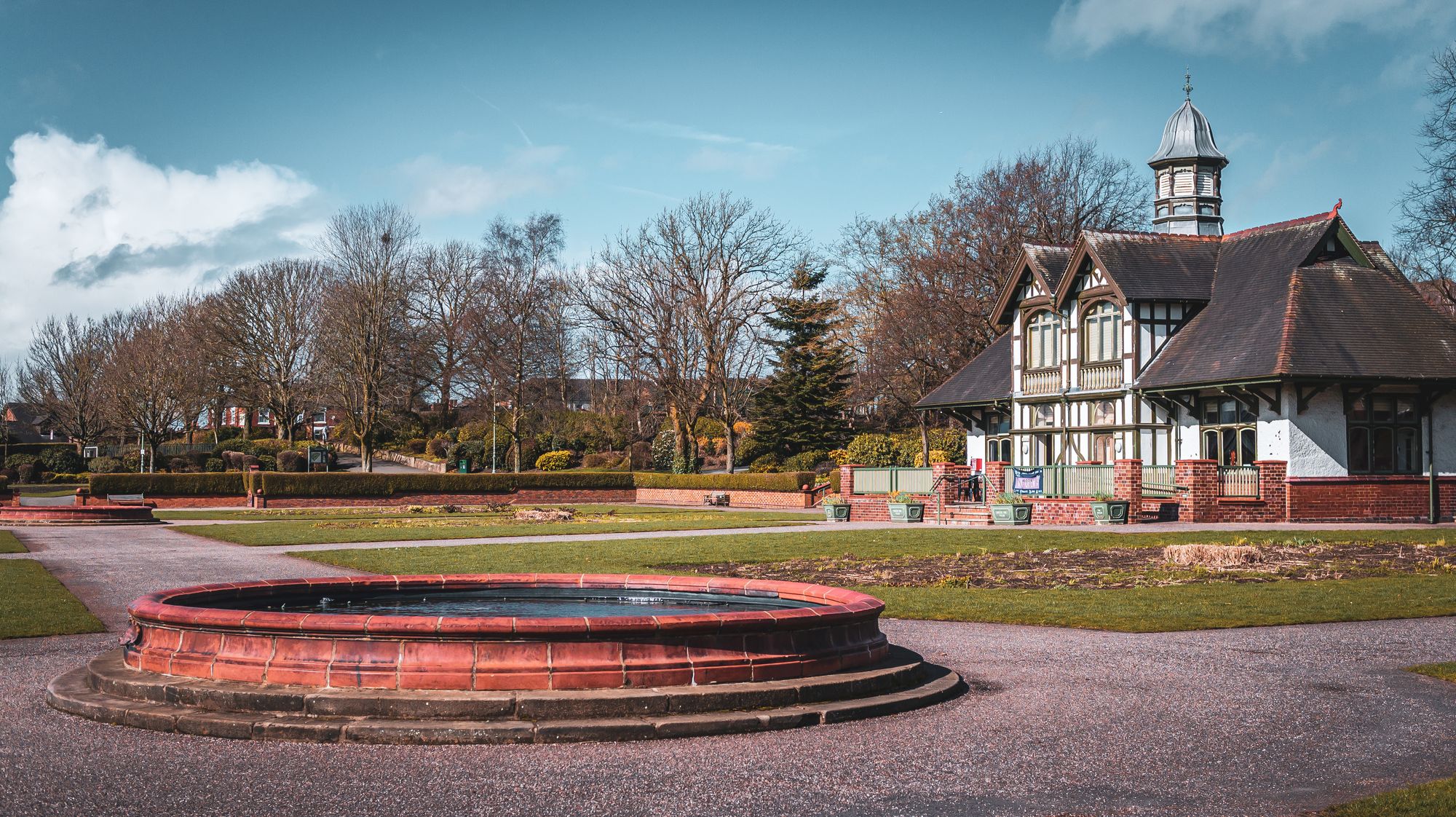
We are so lucky that Burslem Park hasn't changed too much over the years. We have unfortunately lost the stunning part of the fountains, but the park has been very well looked after.
It opened in 1894 and is pretty much unchanged. It has been restored, the work was completed in 2012.
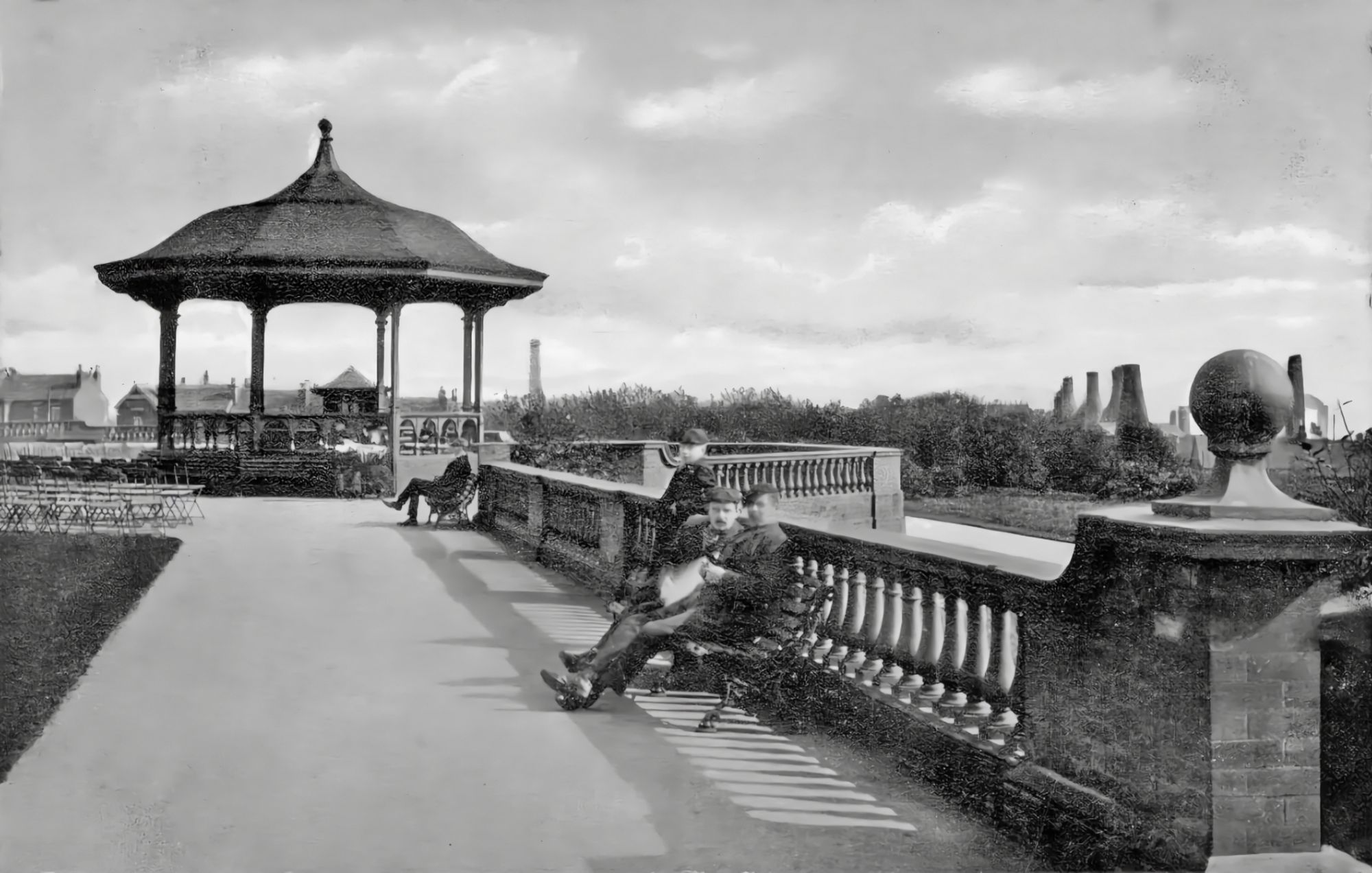
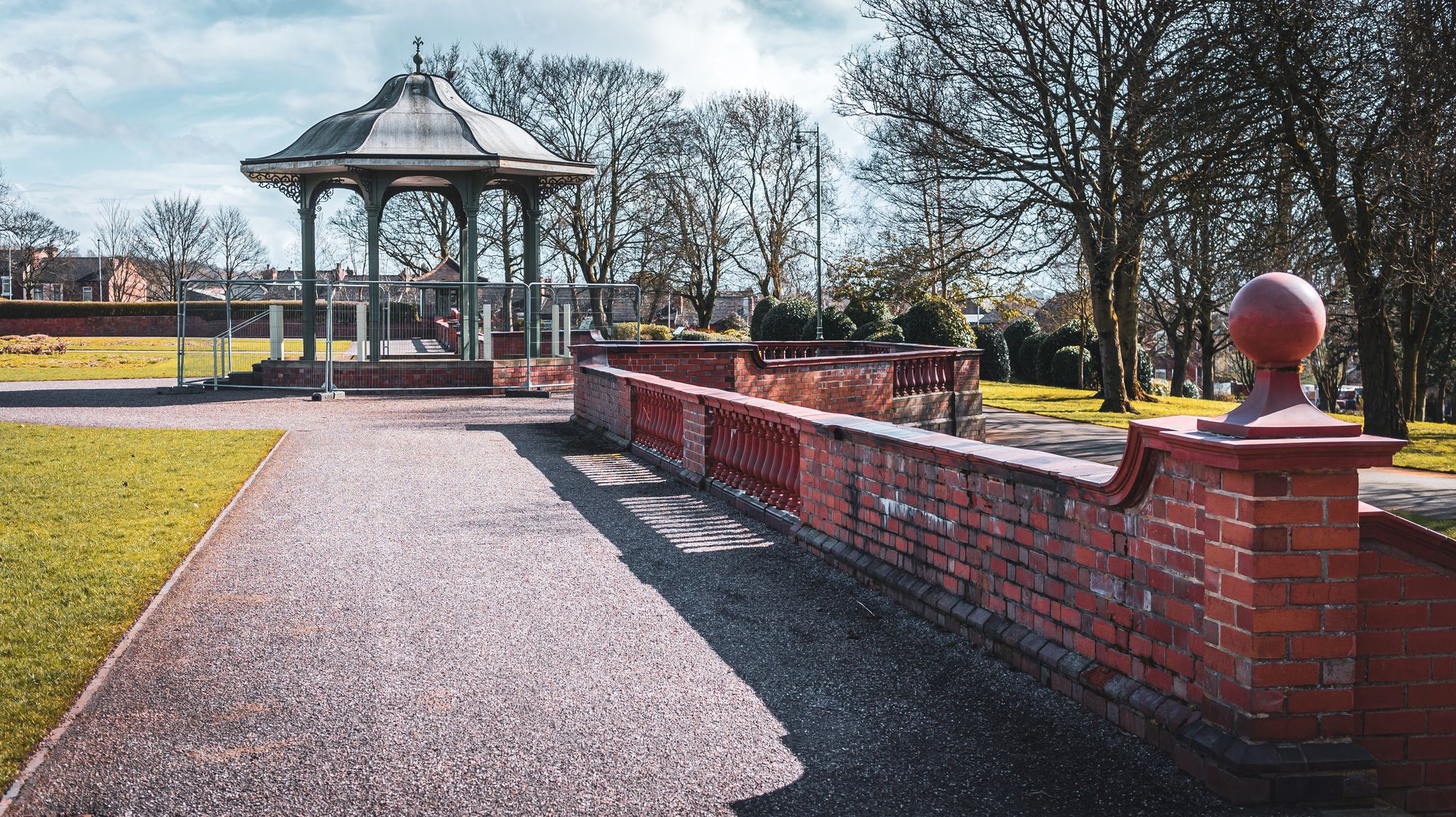
Another view that is luckily unchanged. The view in the background is less industrial than it used to be and the park now has more mature trees. The bandstand is a cast iron structure erected in 2008 because the original burned down in 2005.
The terrace and the terracotta balustrade are all still the same and still as beautiful.
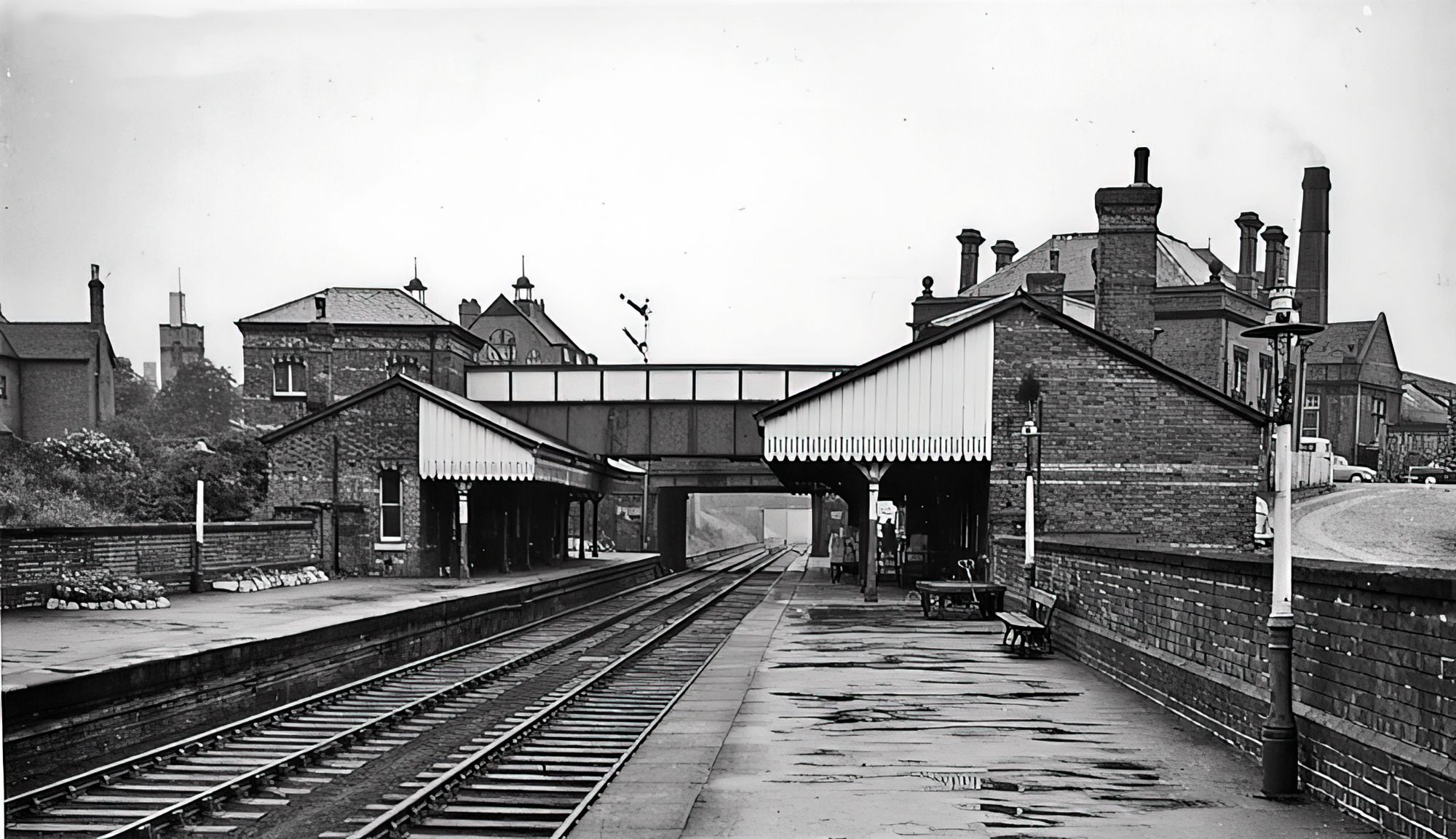
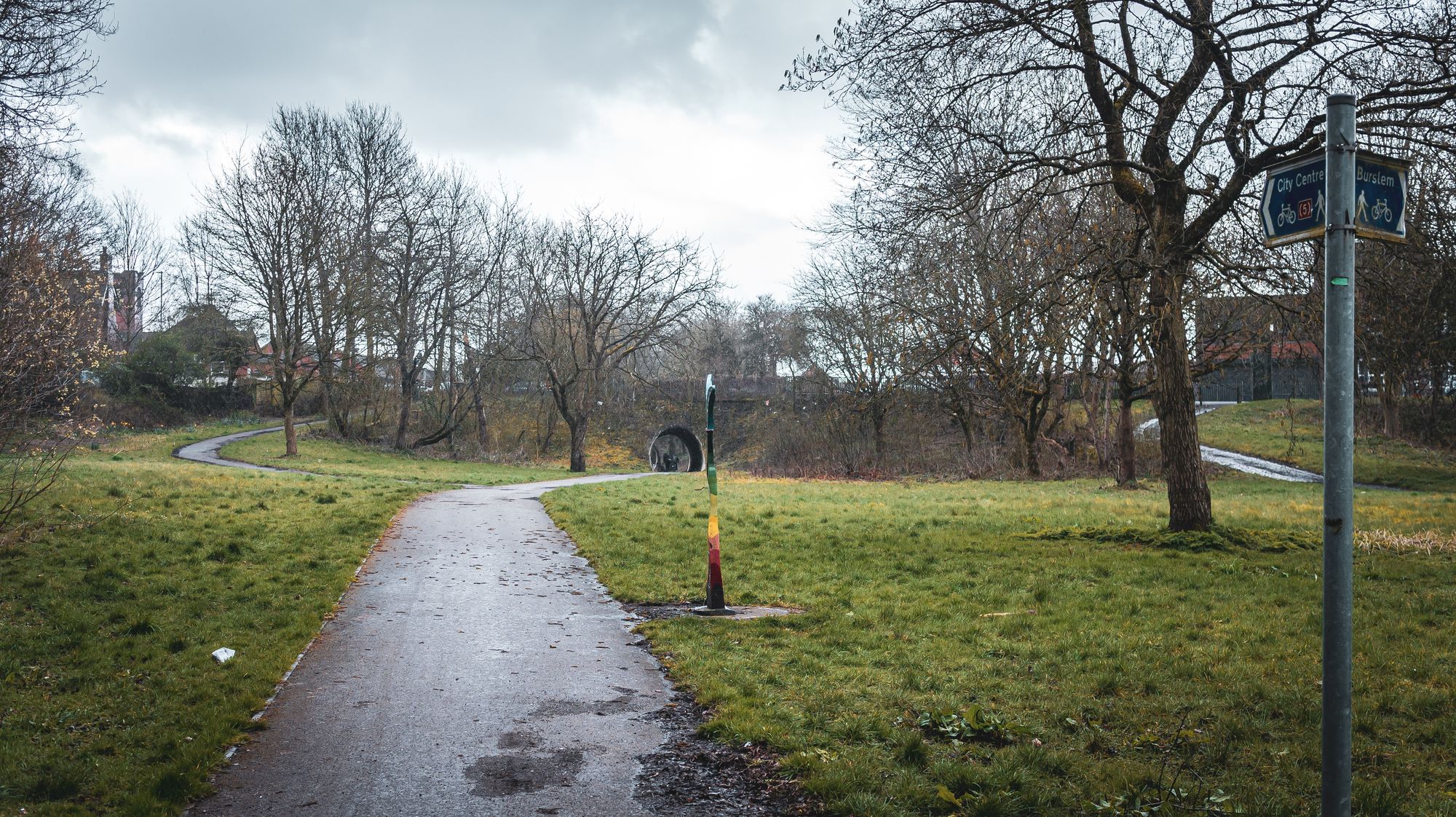
Burslem Train Station was a station on the Potteries Loop Line that opened in 1873 and closed in 1964.
There is almost no trace of the station at all now, except for the Station House on the left of the photo that sits near the entrance to the park.
Everything has been removed now and it has been replaced with paths for walking and cycling and green spaces.
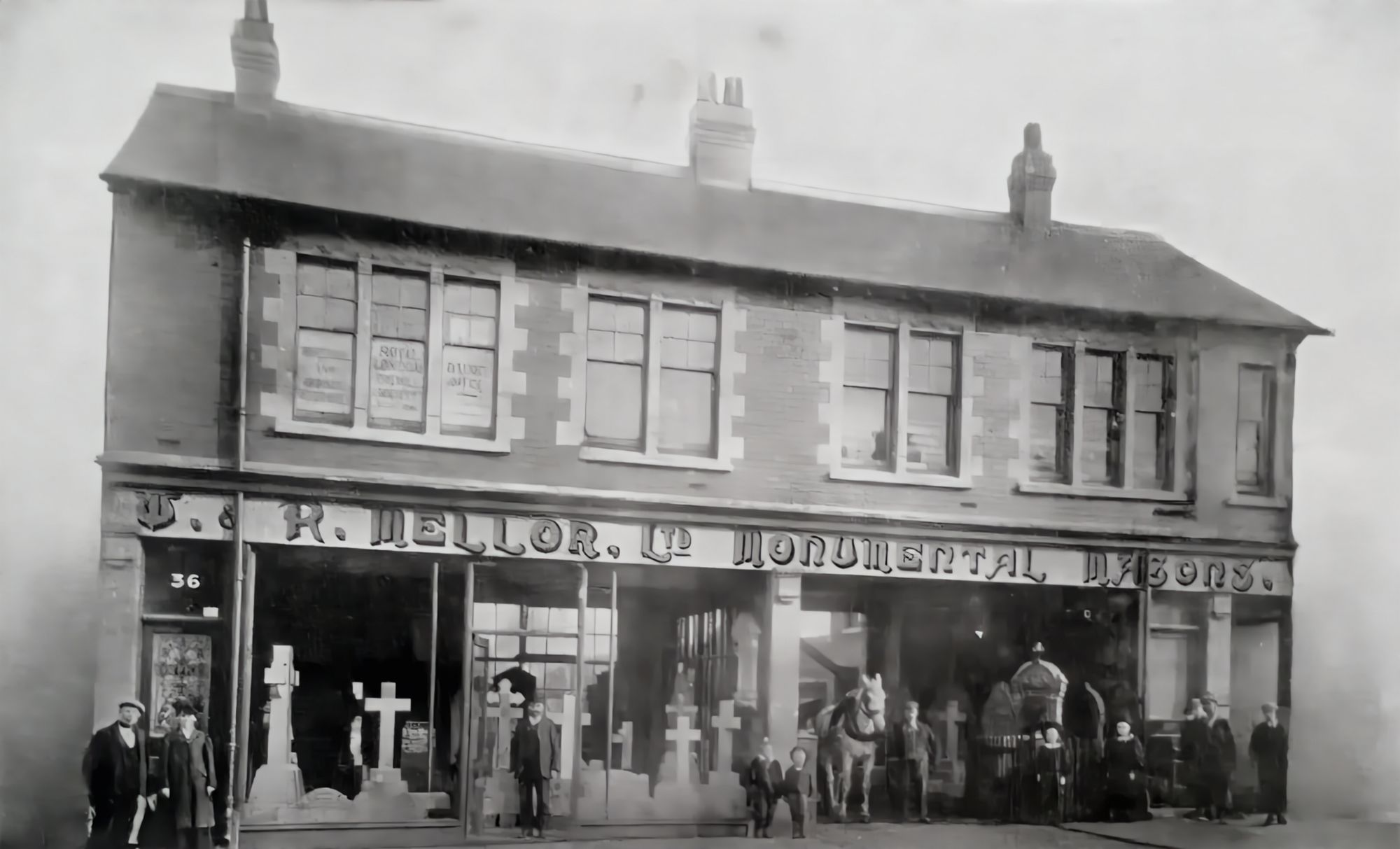
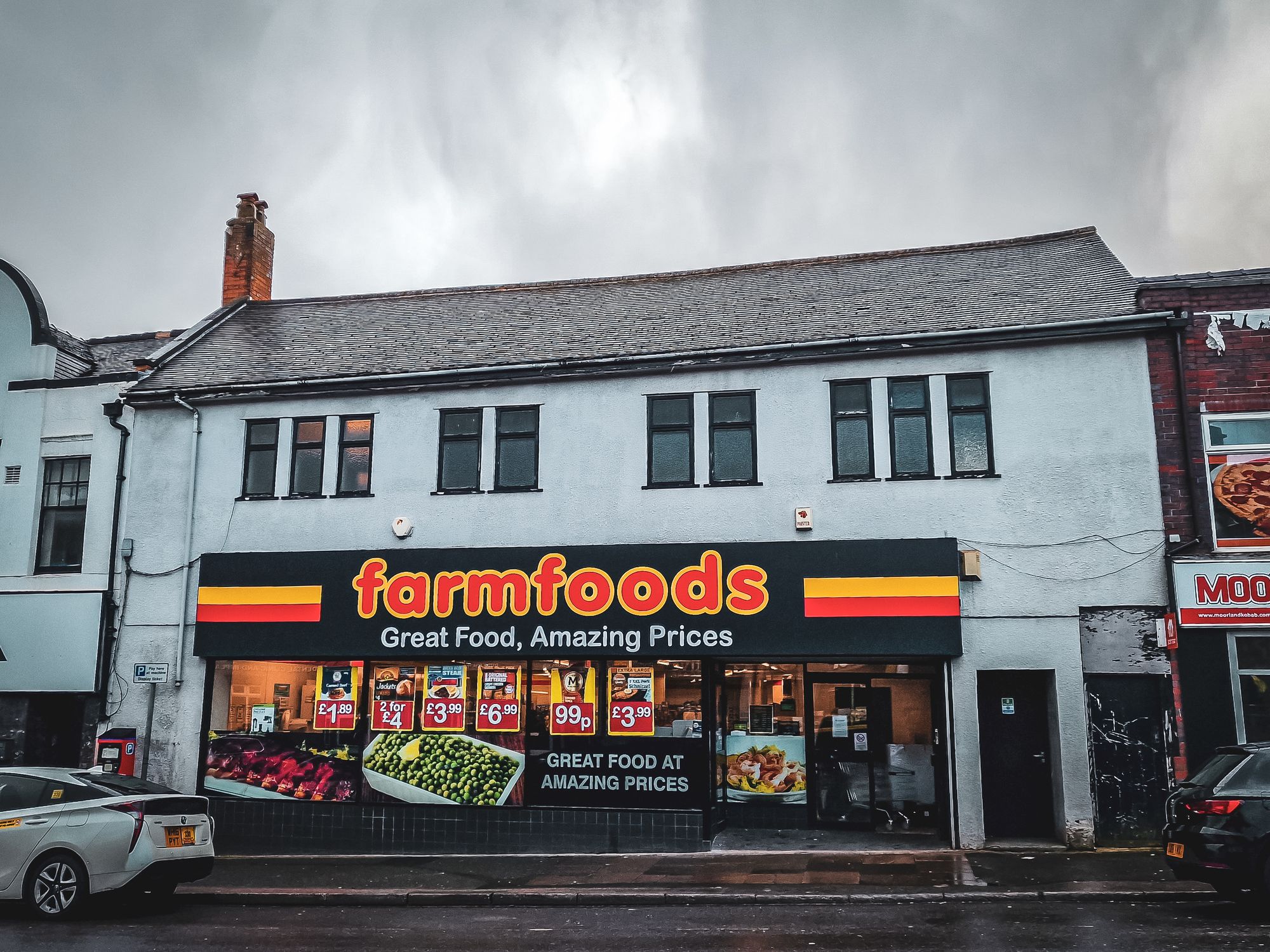
You wouldn't think, as you drive down Moorland Road, that the unsuspecting building that is now Farmfoods, was once home to W & R Mellor Ltd. This stonemason was responsible for sculpting the Albert Square monument, better known as the War Memorial that stands outside the town hall in Fenton.
It seems that what was once a lovely-looking working building, now blends into the generic buildings with its facade covered with white plaster.
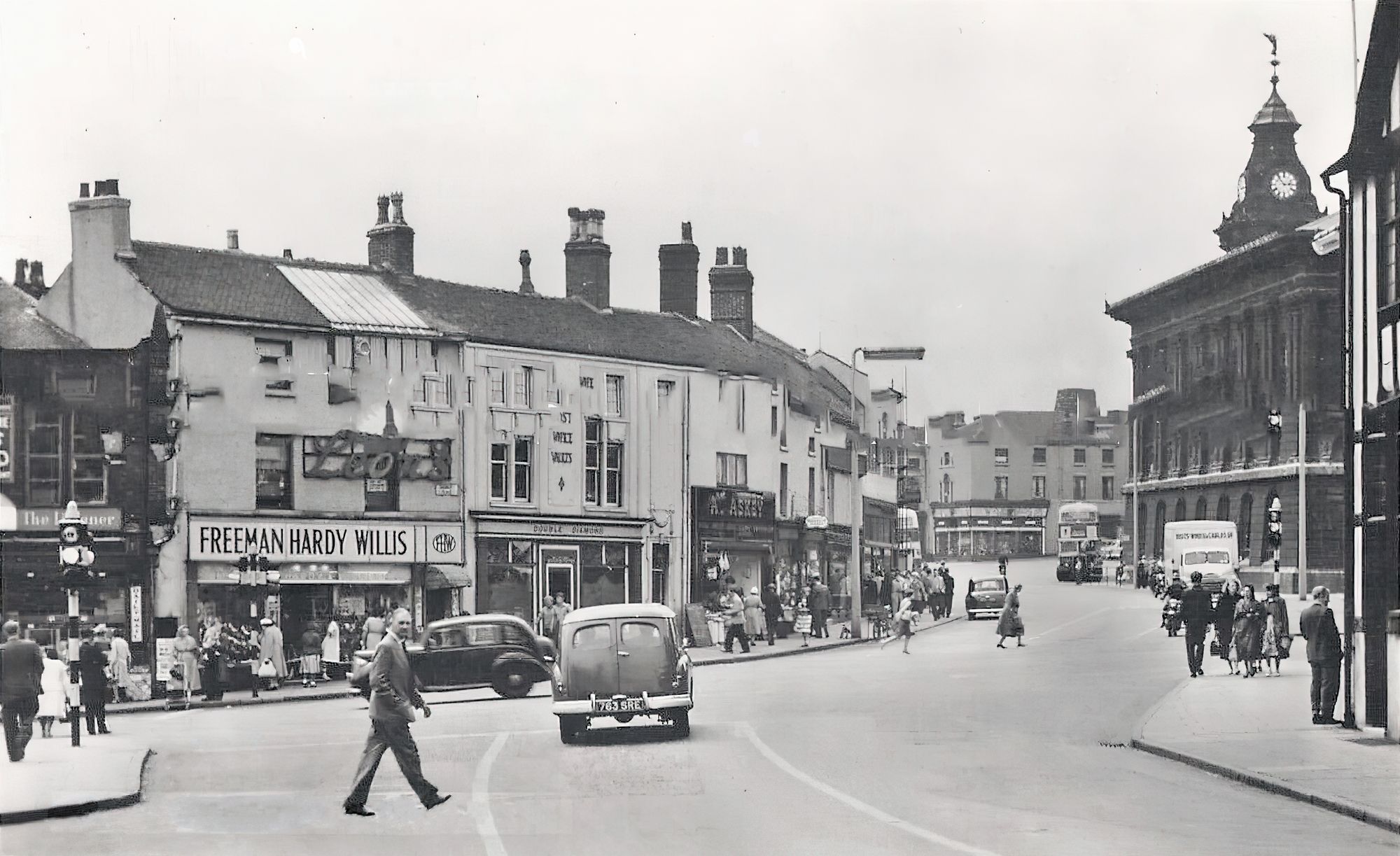
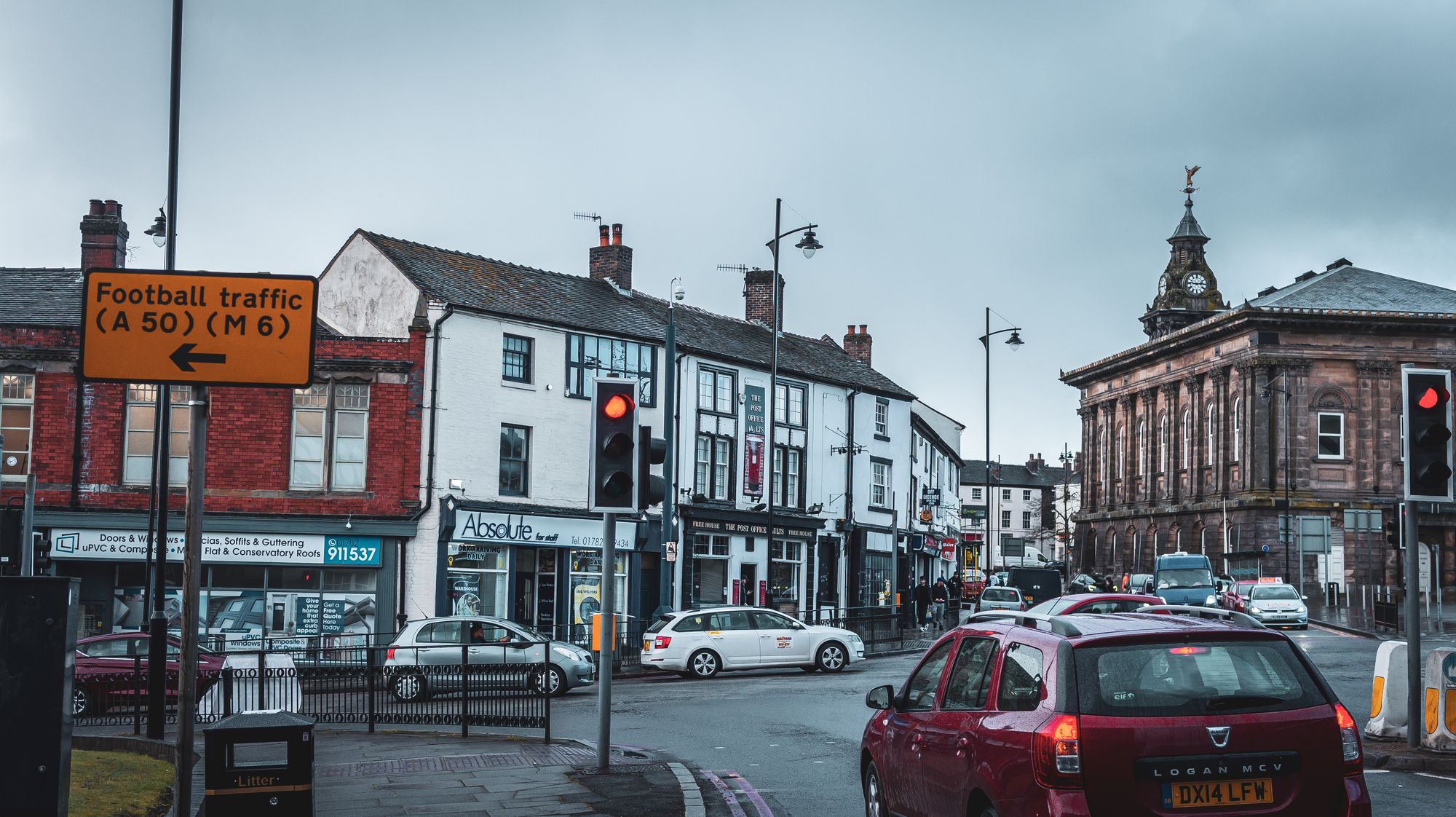
A great photo of Burslem with a view of the town hall in what seems to be the 60s. The buildings are all mostly still standing and the view hasn't changed all that much.
The main difference is that today more cars and fewer people are walking, which is probably why trade in these small towns is struggling so much.
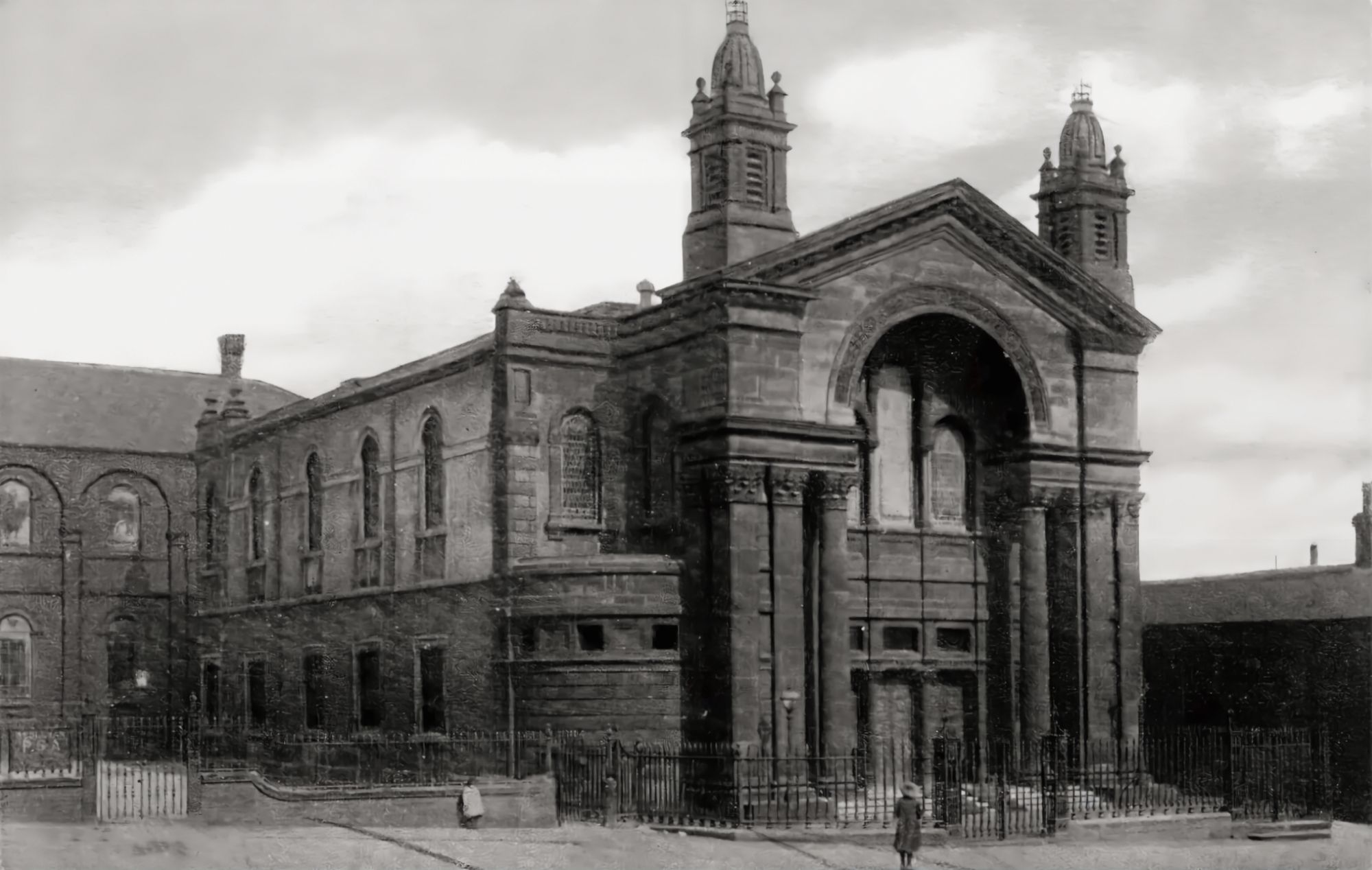
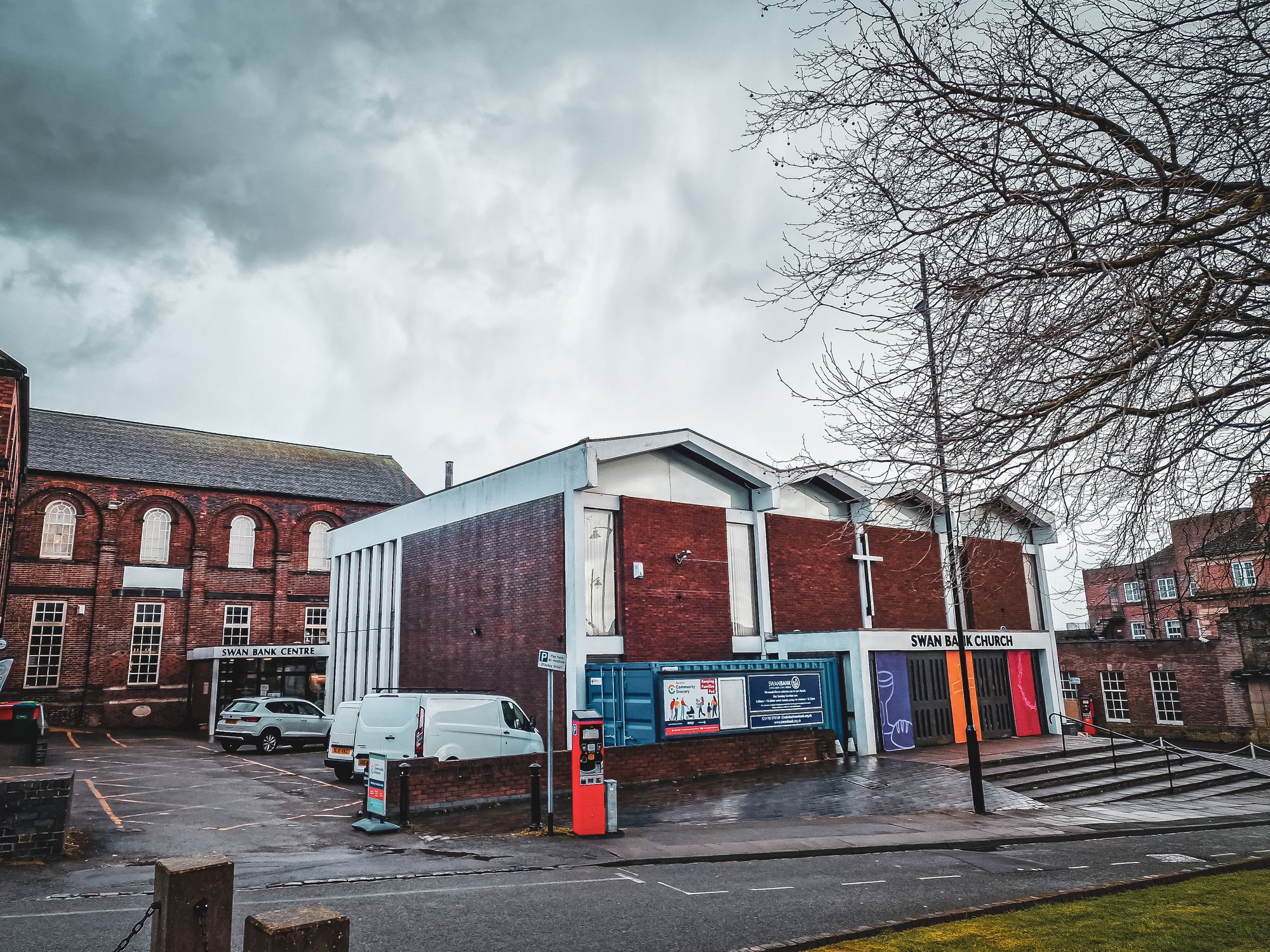
The difference between these two photographs is staggering. Swan Bank Wesleyan Methodist Chapel was a magnificent building built in 1801.
For some reason, and I cannot get my head around why, this incredible building was demolished in the 1960s and was replaced with the one in the photo.
The surrounding buildings are all still standing.
I do personally feel that losing this building must have been a great loss to Burslem, as it was truly beautiful.
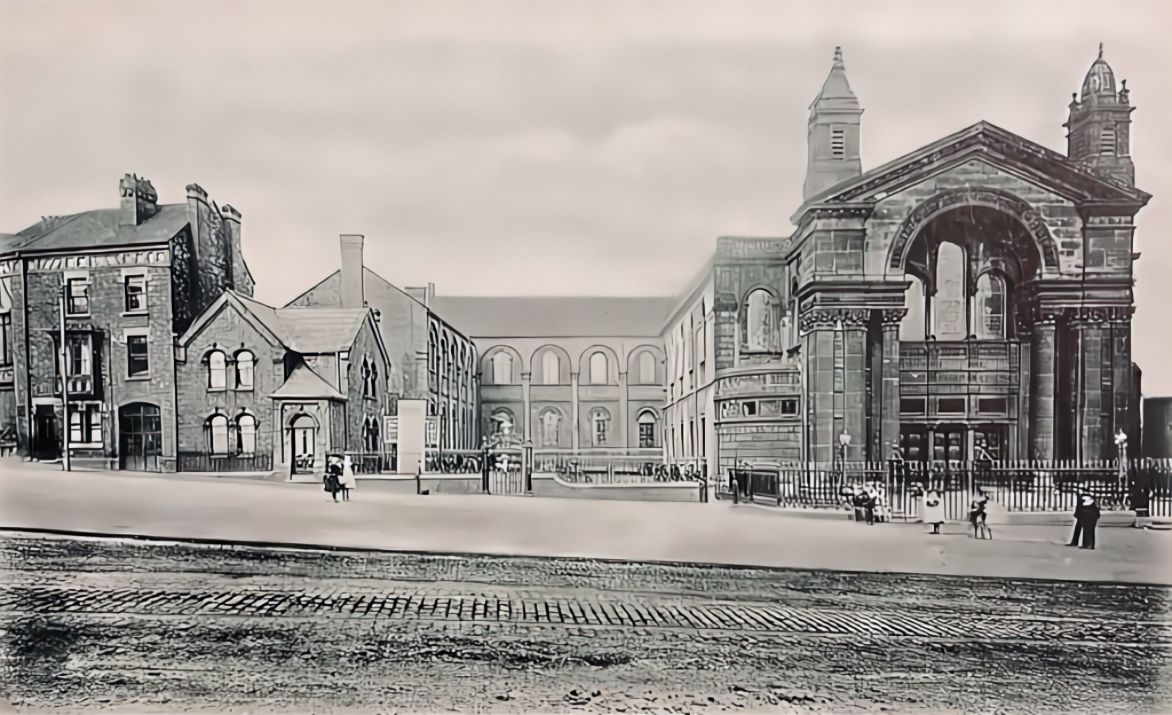
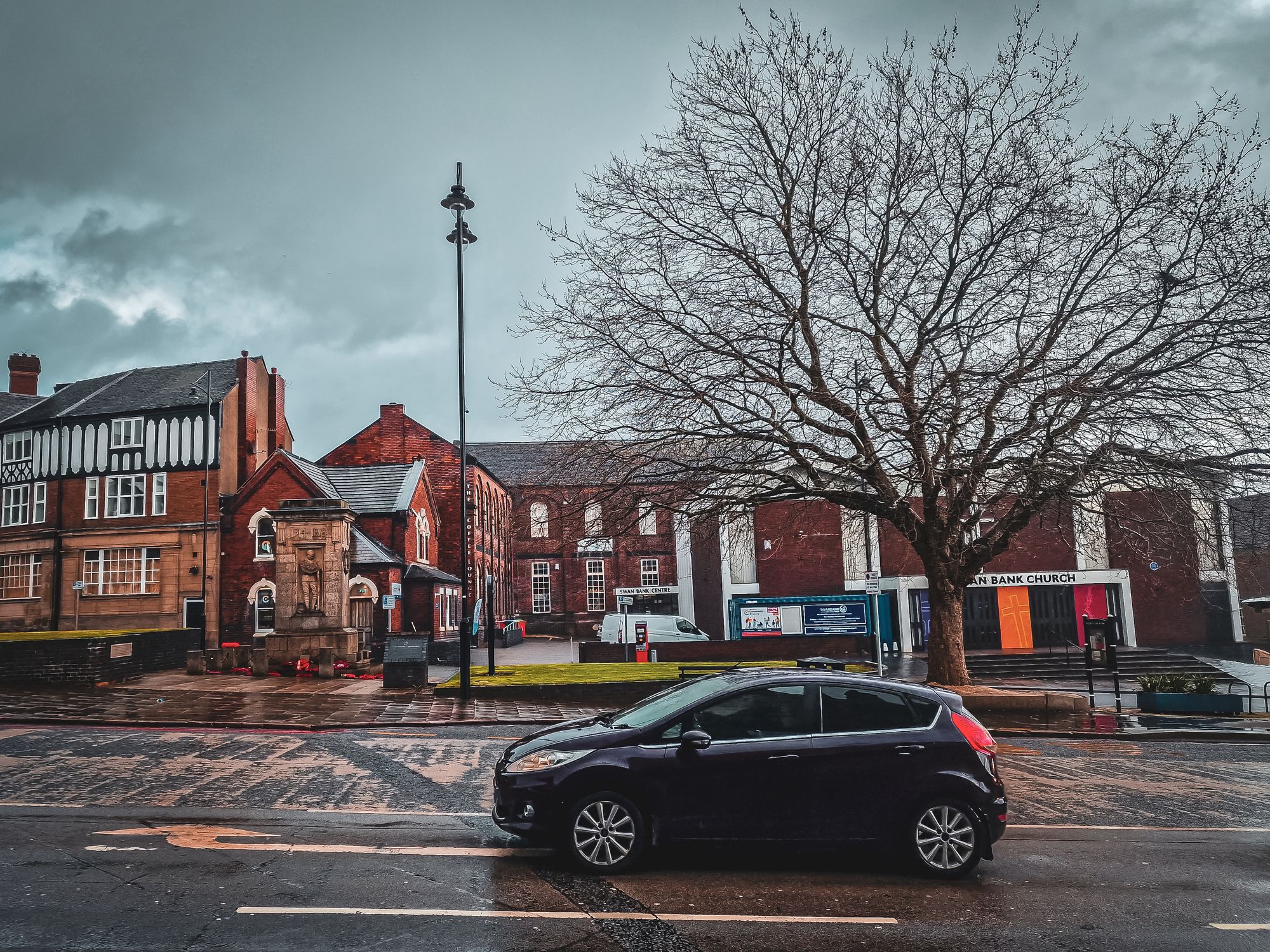
This is a view showing how the square looked before the church was demolished. As you can see, the other buildings haven't changed much. There is the addition of the war memorial in the recent photograph.
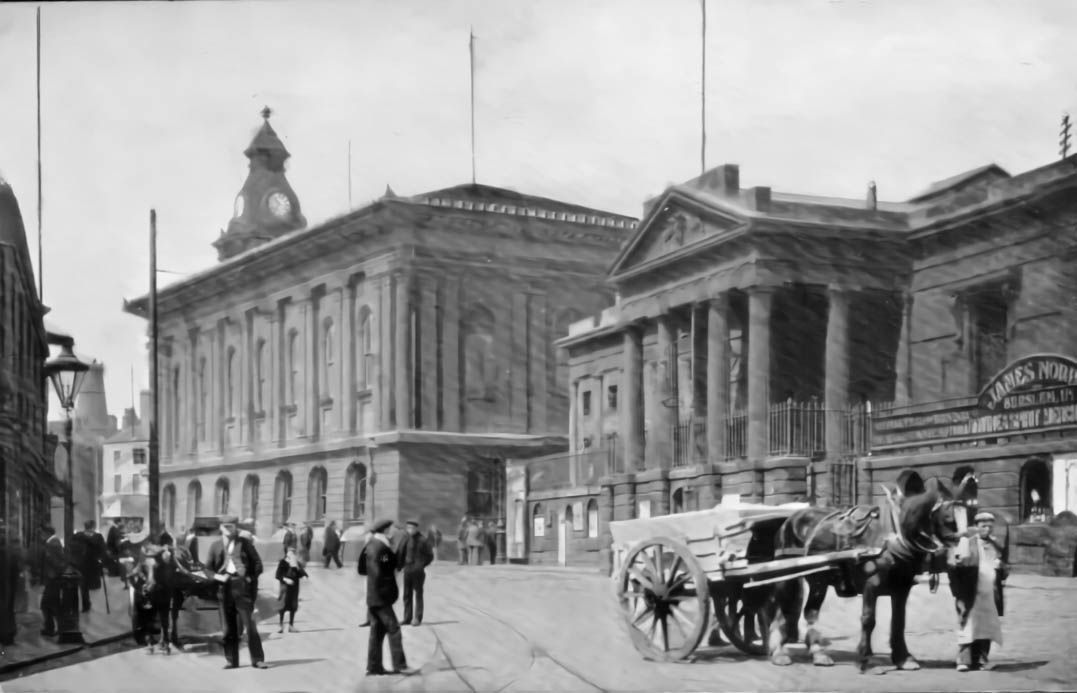
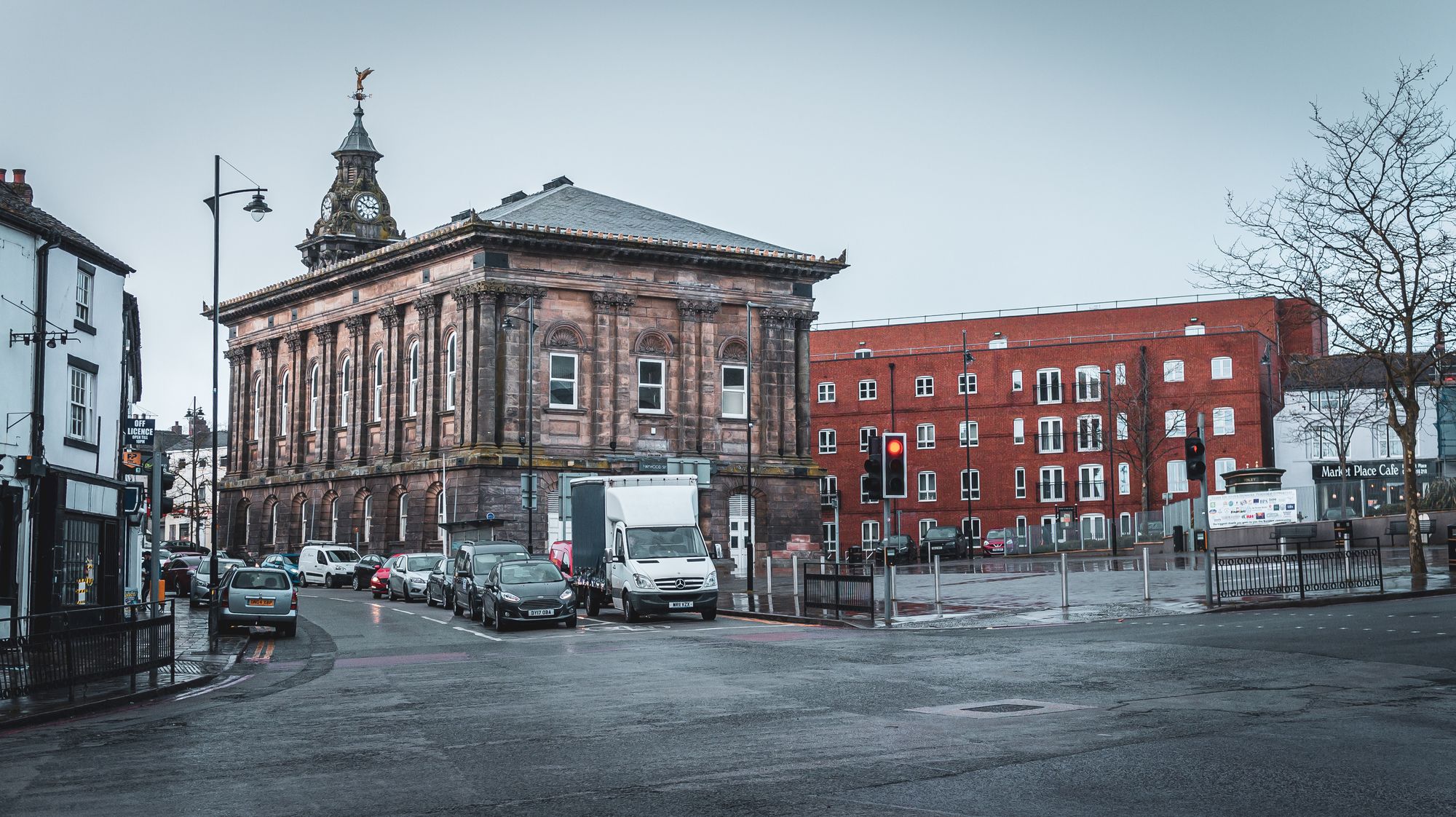
The contrast between these two photographs is striking. The horse and cart and all of the people standing on the road show that this was a busy road, but nothing compared to the modern route that it is today.
The biggest difference though is the huge missing building. This building was James Norris Ltd, a brewery and bottling plant. It was also The Shambles meat market.
James Norris was also the entrepreneur that purchased The Leopard and expanded it into a huge commercial hotel that became famous.
It is from this brewery that the tunnels led into The Leopard.
The building was demolished in the 1950s, leaving a space that has never been well-filled. (We try not to talk about Ceramica).
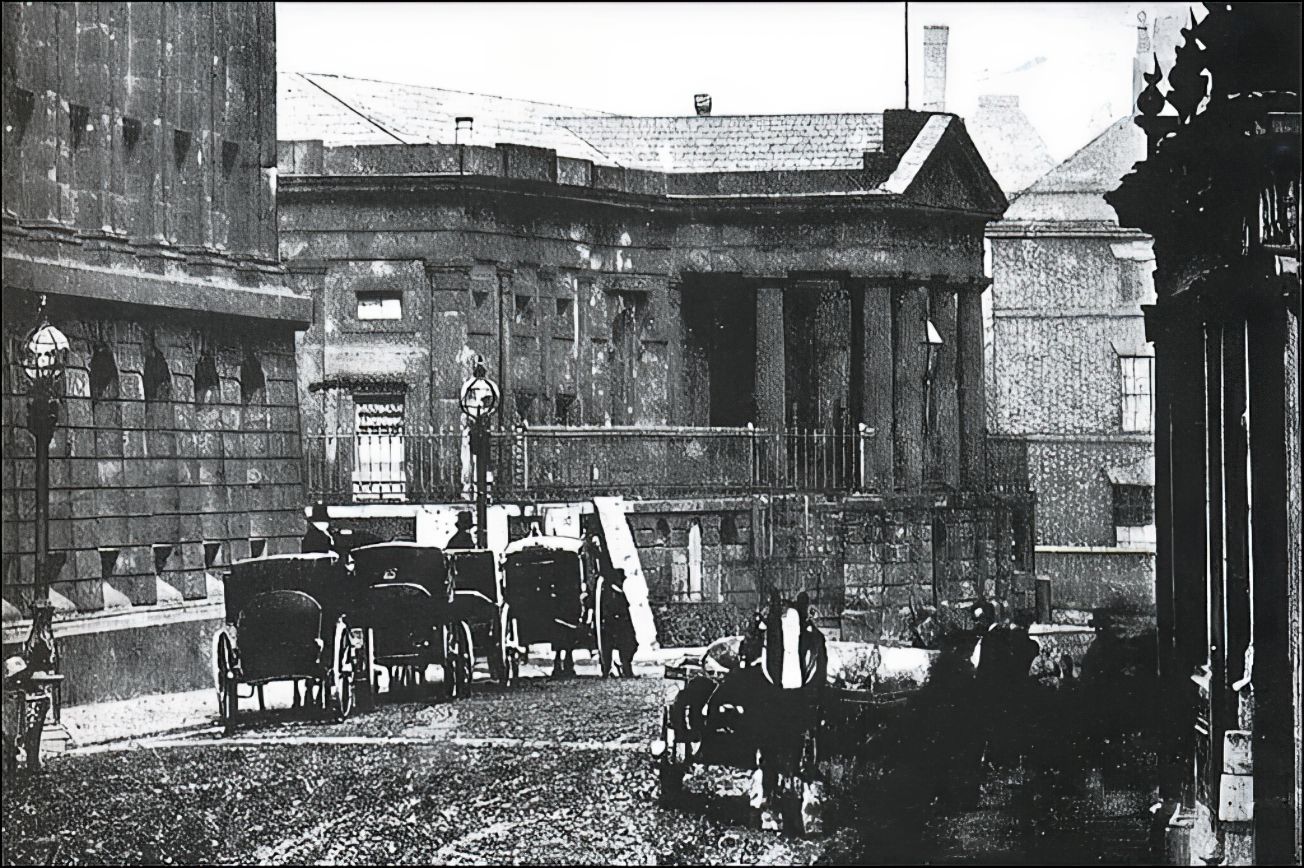
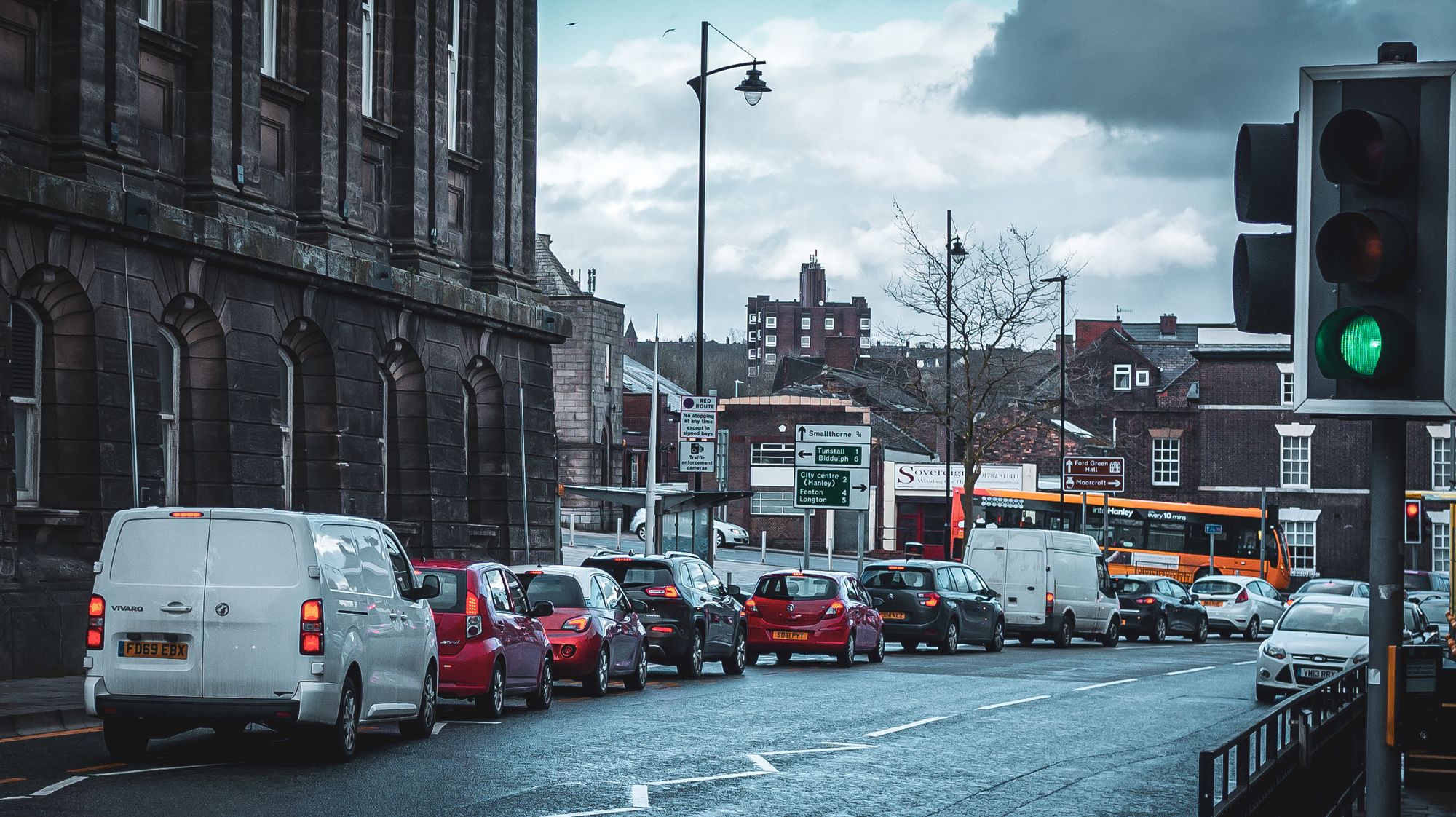
Another view of the meat market and the brewery shows the hackney cabs waiting at the cab rank. It is a stark contrast to the traffic that sits there today.
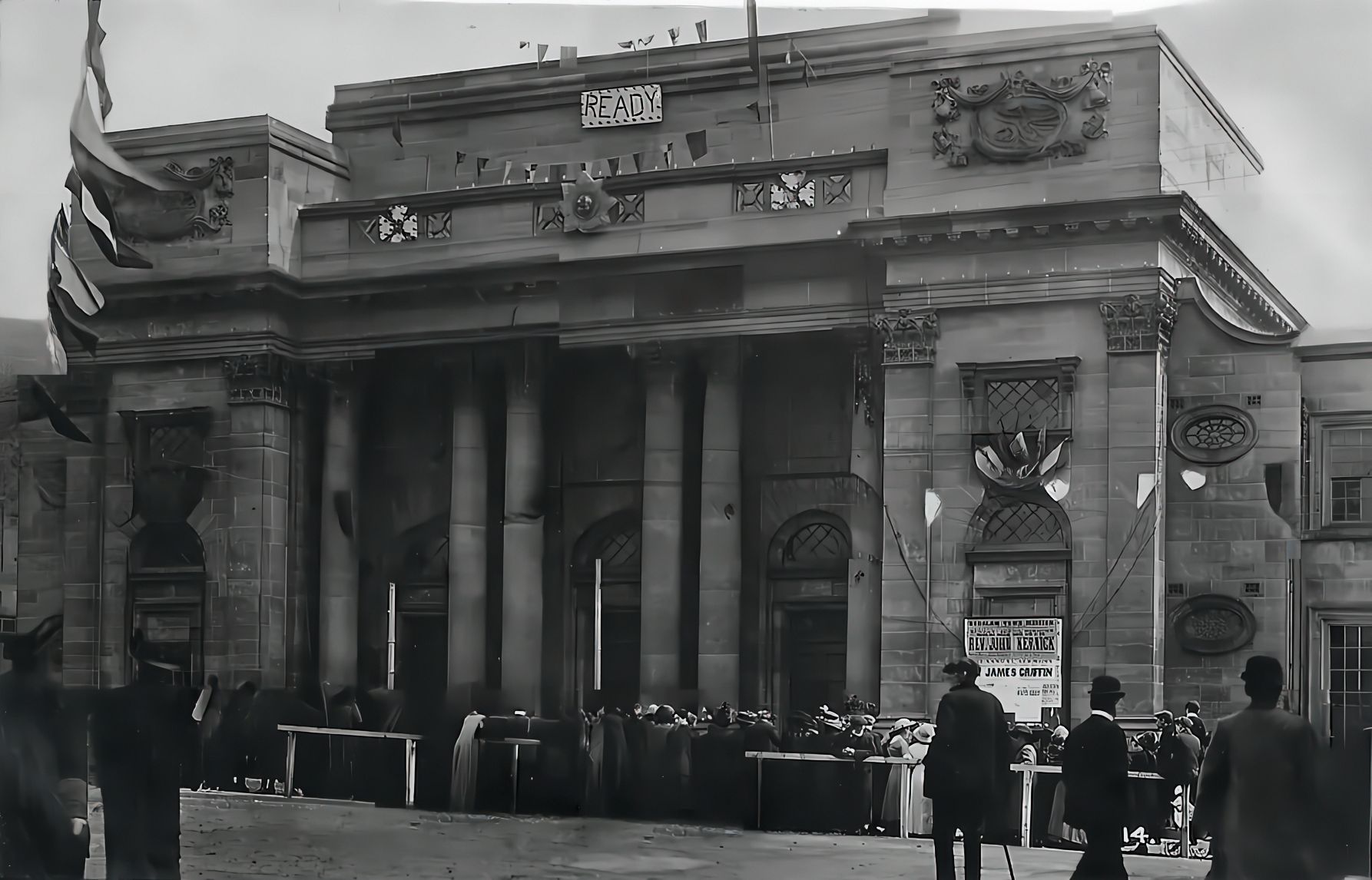
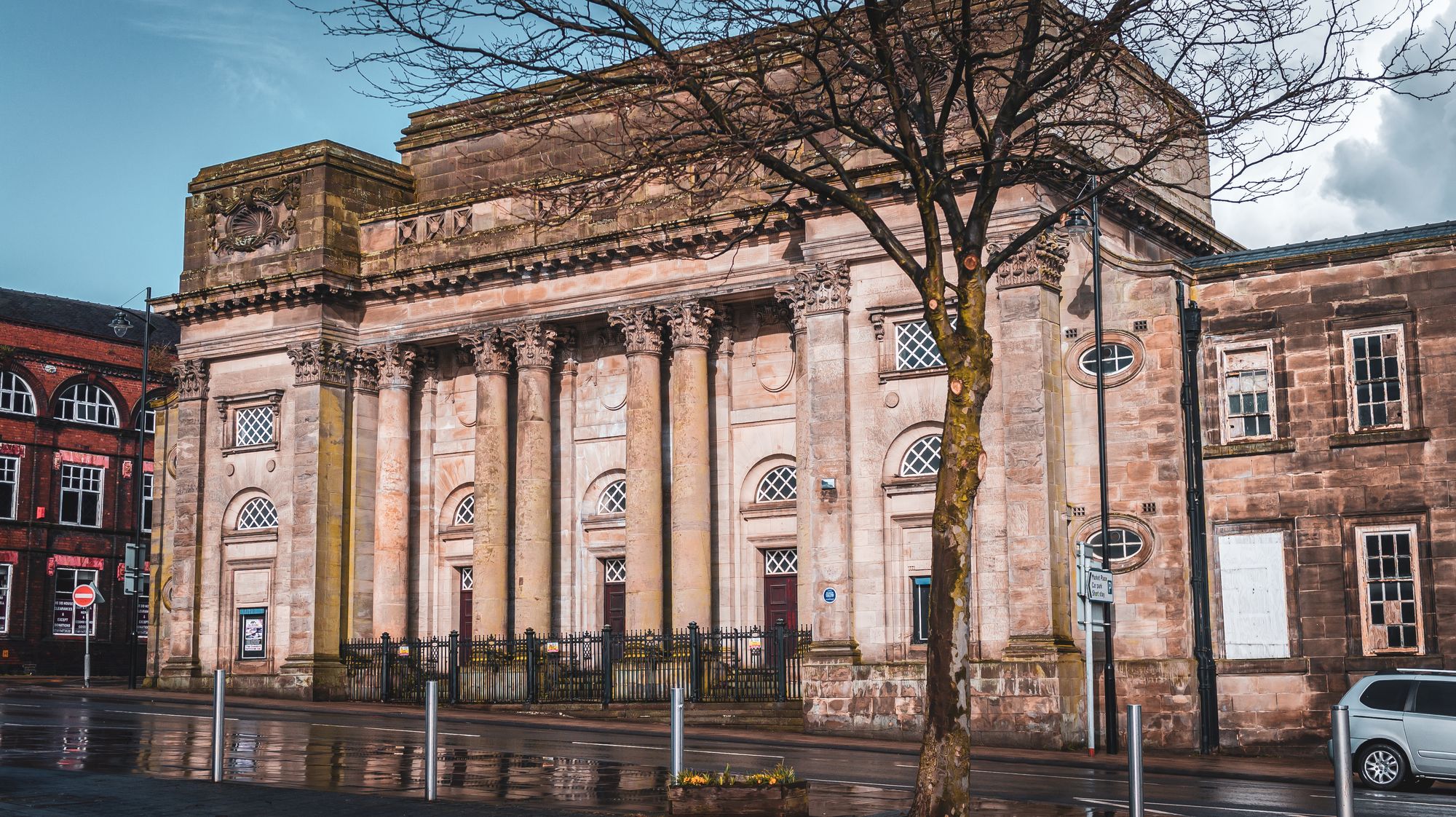
The Queens Theatre is, undeniably, an imposing and stunning building. Unfortunately, this doesn't mean anything, as it is still empty and rotting. Built in 1911 it was supposed to replace the Old Town Hall, which incidentally is the building that we all know as the town hall.
It became the Queen's Theatre, and for many years held concerts, theatre, fights and many more types of entertainment. It, unfortunately, closed in 1998 and although it was used a few times, it permanently closed in 2014 and has sat derelict, damp and dying since then.
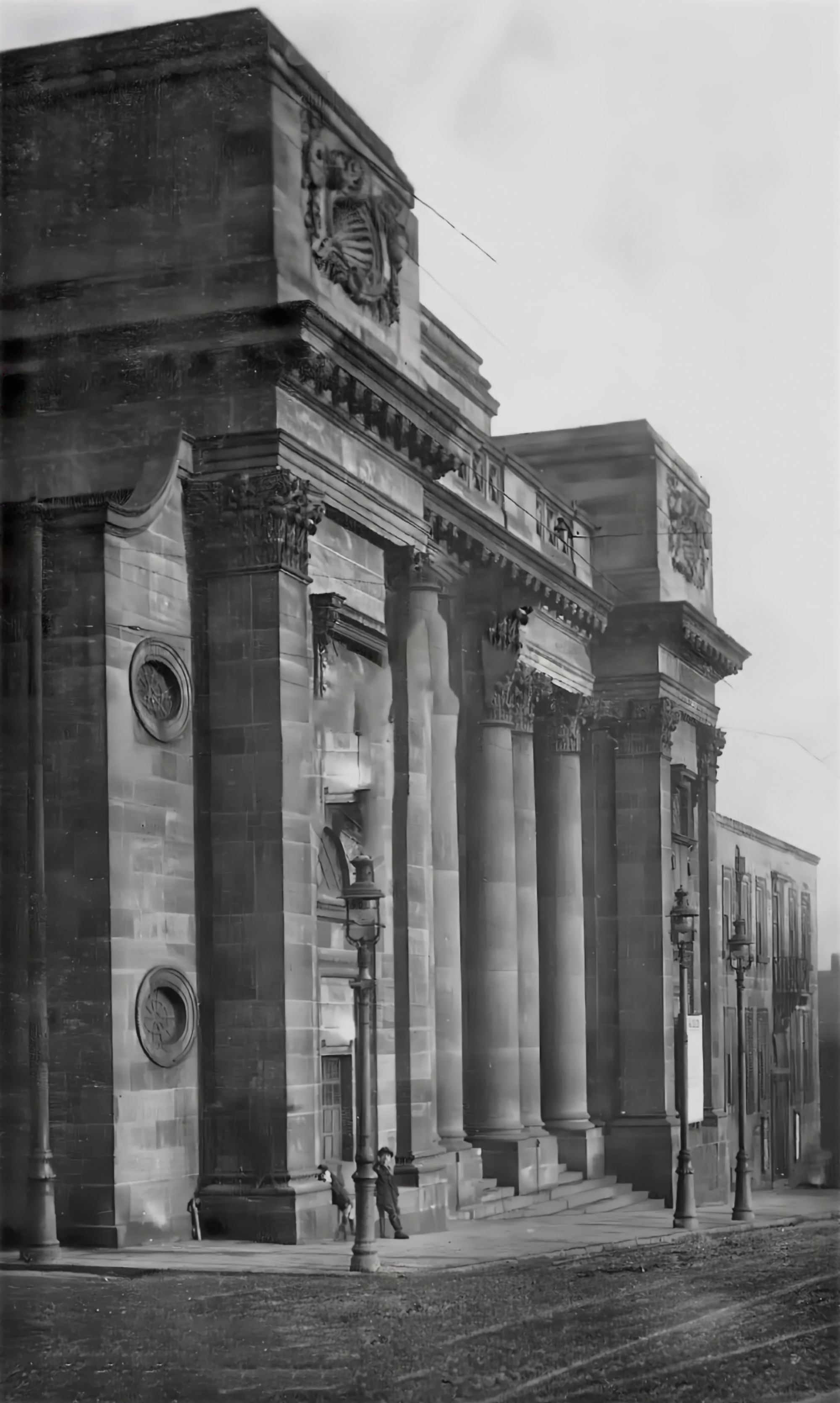
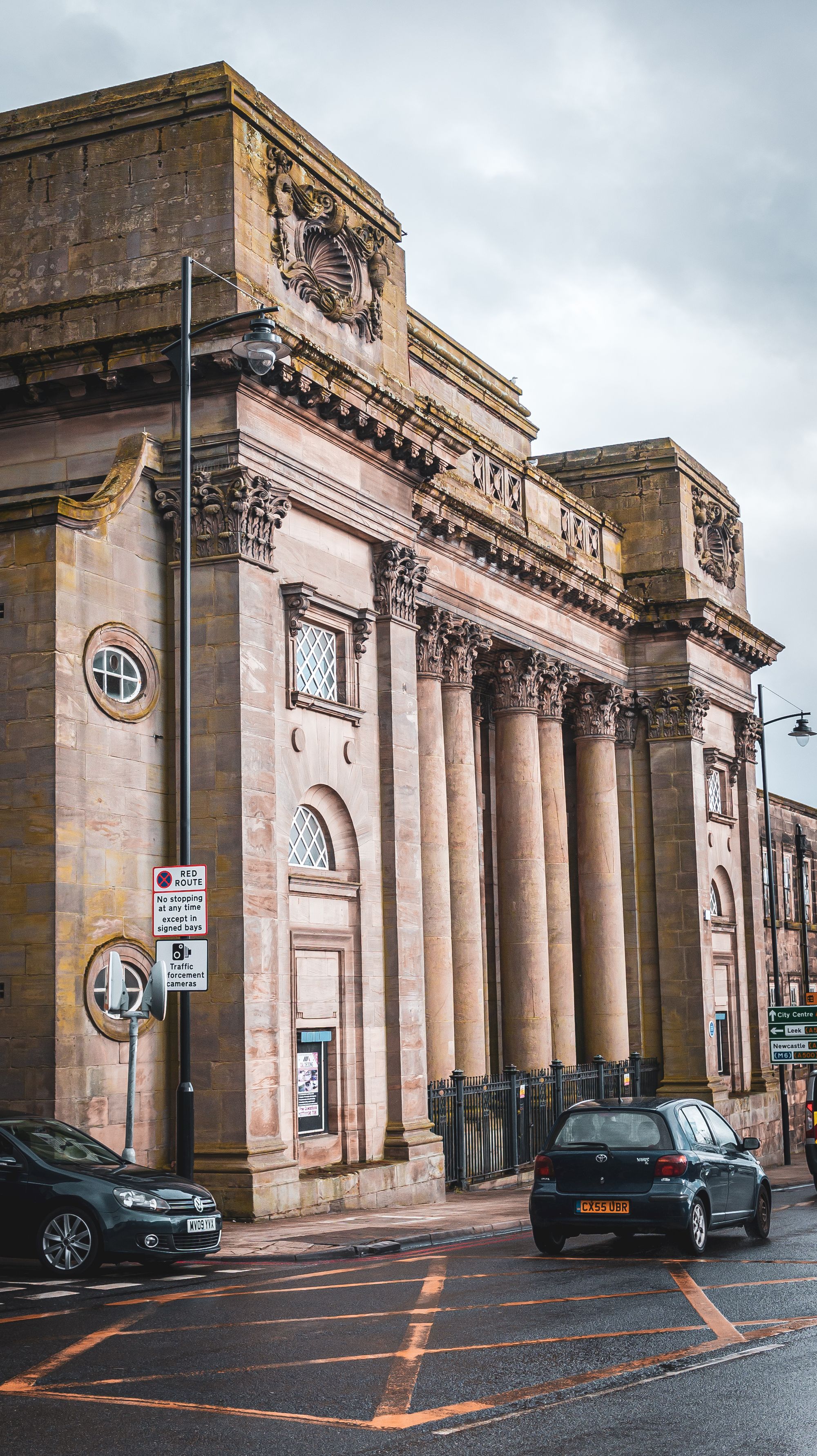
Queen's theatre as viewed from another angle. The biggest differences here are the railings haven't been added yet, the gas lamps are still standing and the lack of traffic.
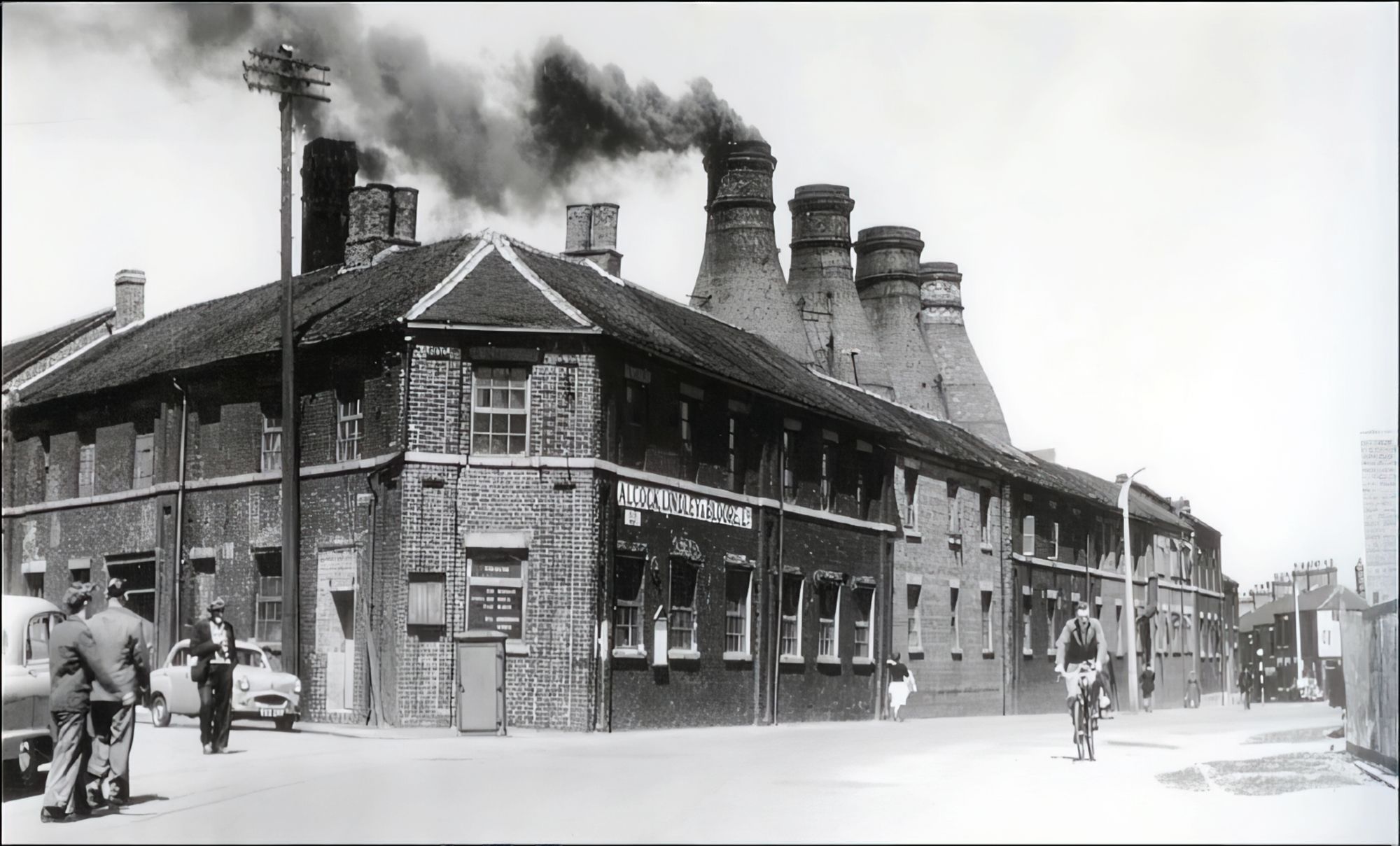
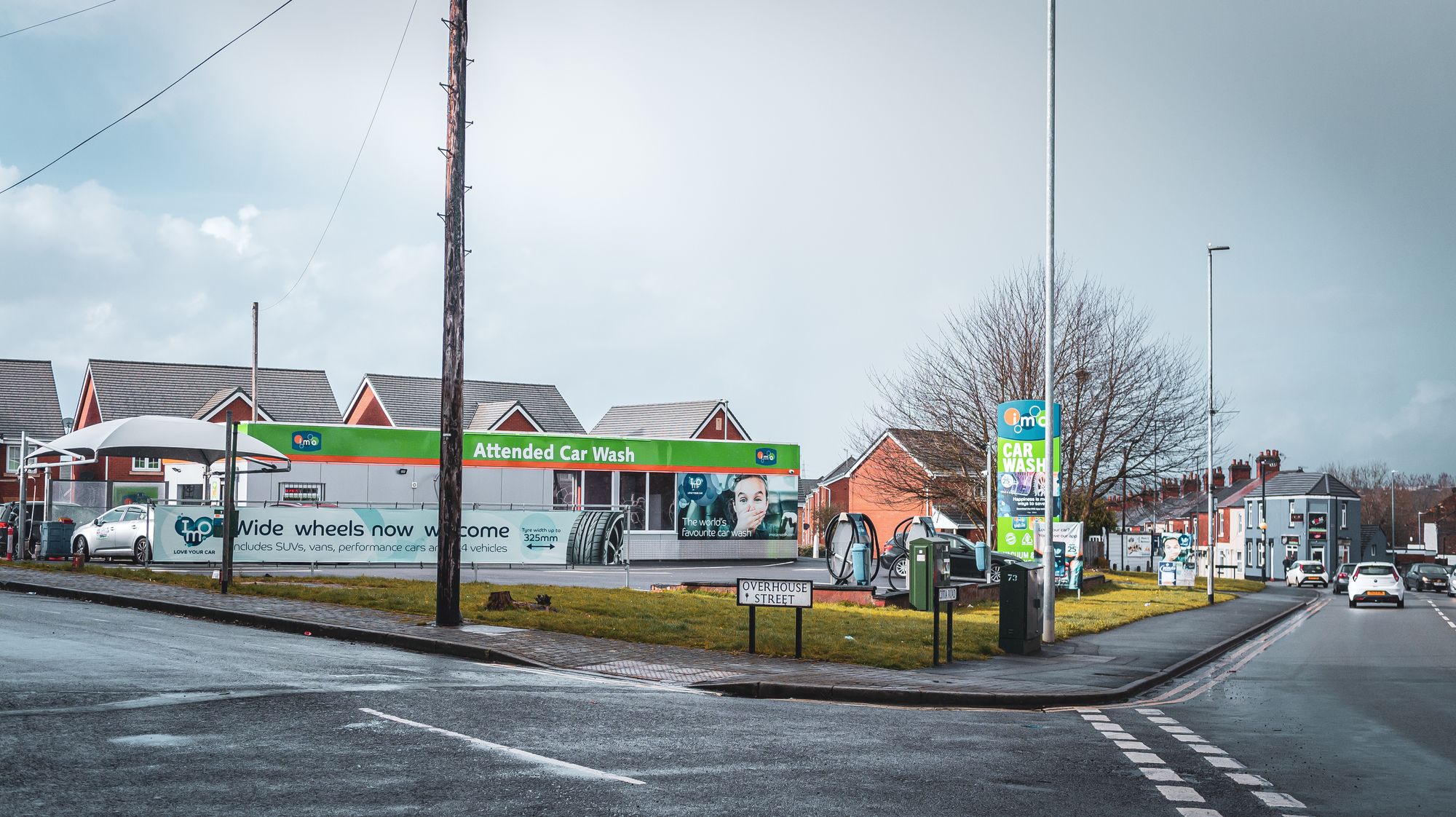
The only thing in this photo that hasn't changed is the houses on the right. This building was originally the parish workhouse for Burslem, built in 1780. It then became army barracks in the 1850s, until it was purchased by James Vernon. There was a succession of different pottery manufacturers using the building into it was demolished in 1956.
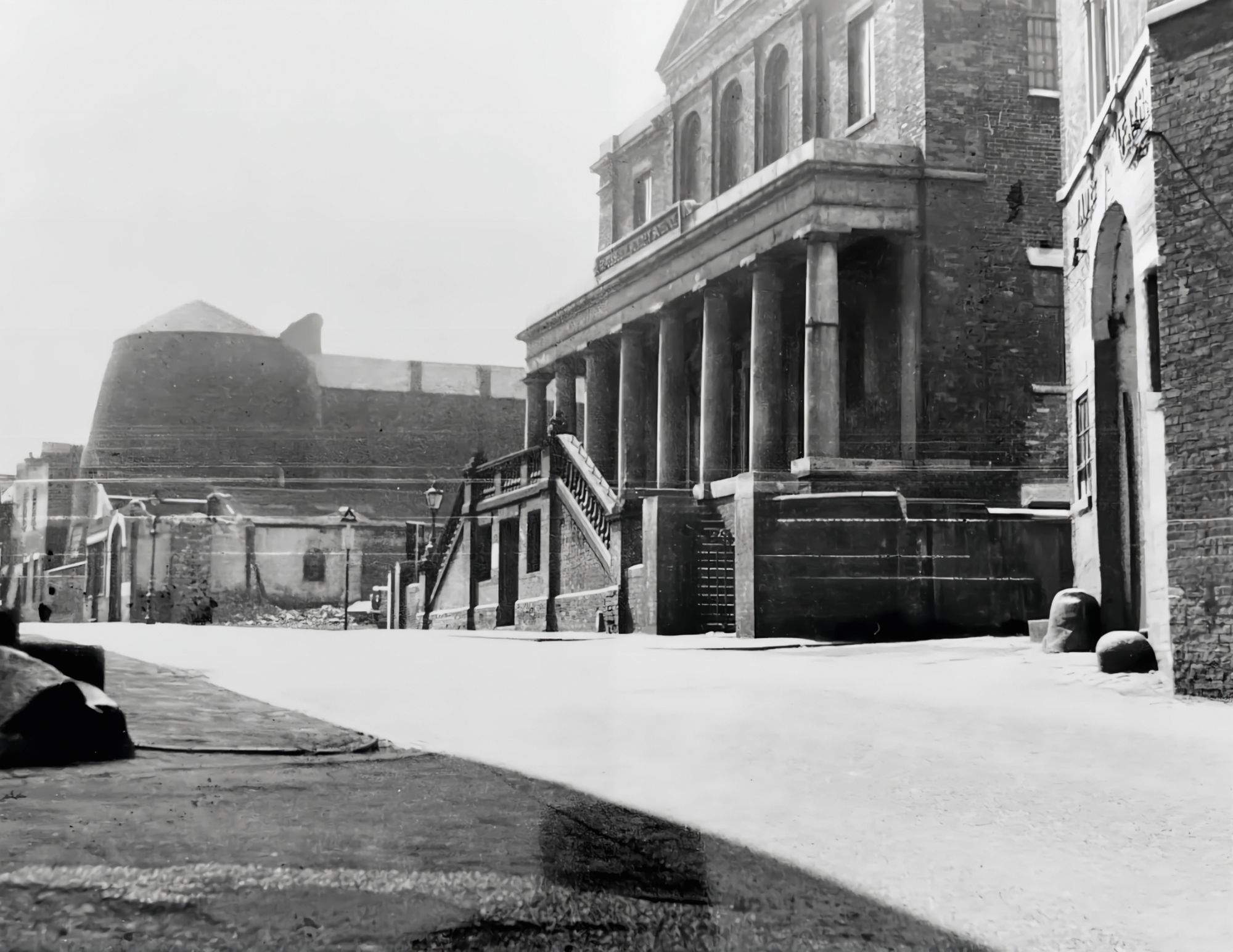
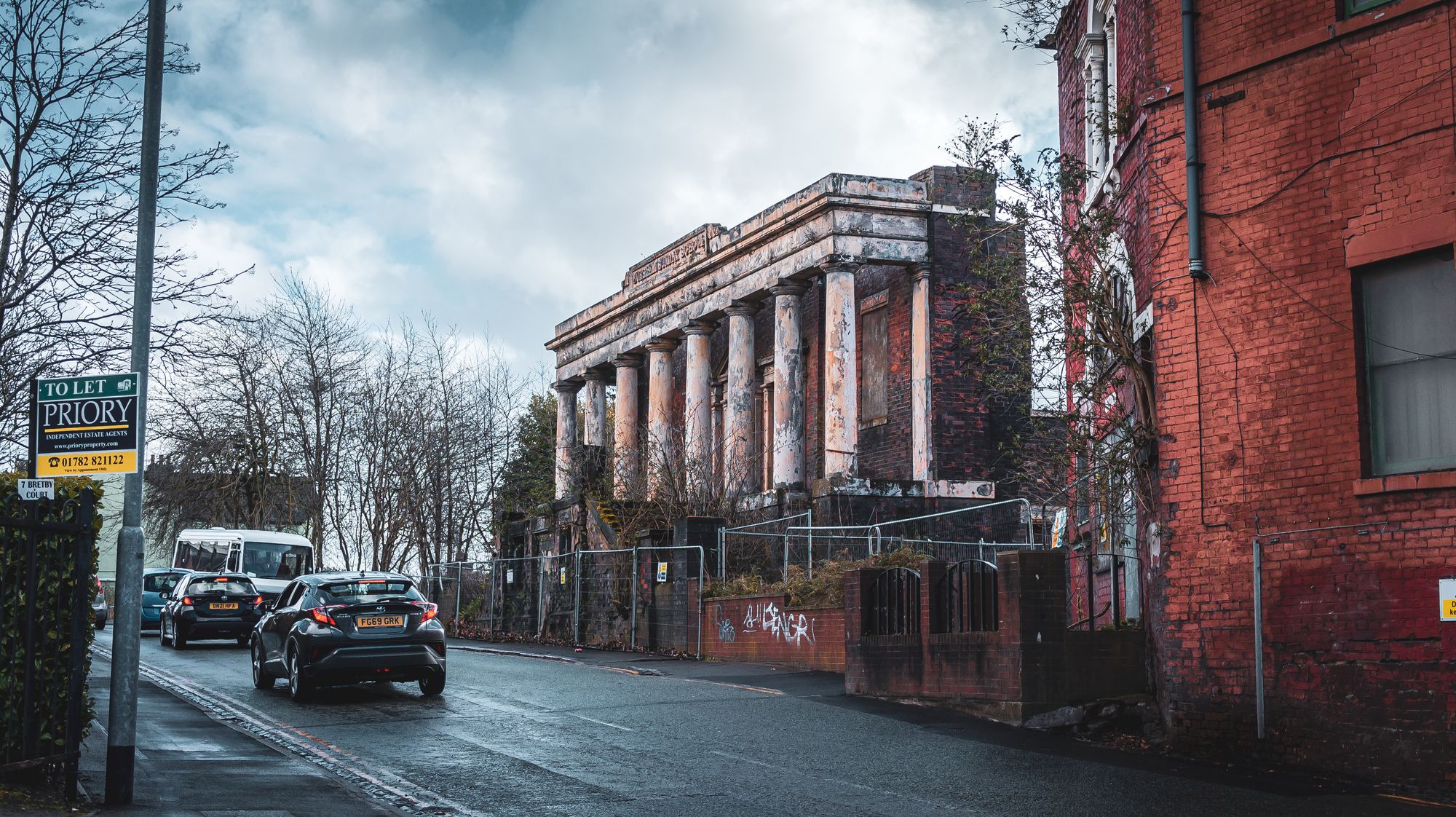
Burslem Sunday School was better known as Hill Top Chapel and was built in 1836. It was damaged by a fire in 1983 and unfortunately demolished in 1987. although the front of the building was left standing and still stands today. Although it is in a sorry state and needs a lot of love.
The interesting thing about the older photograph here though is the side of Fountain Place Works that you don't usually see. I am most intrigued by the large round building. It is on the old maps but I don't know if it was a building or a kiln. If anyone knows, please let me know as I can't seem to find any info or photos of it.
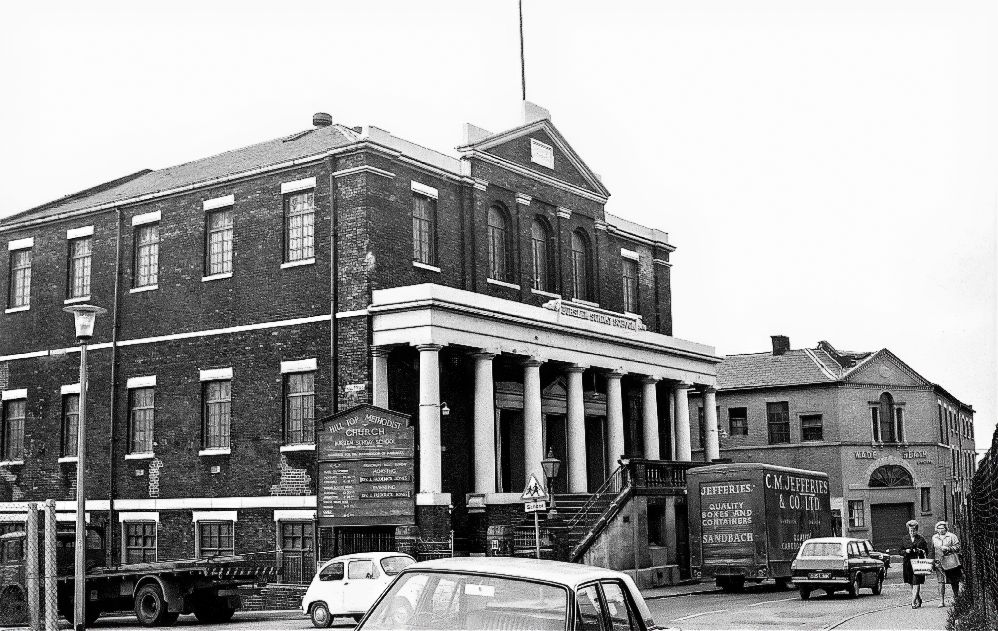
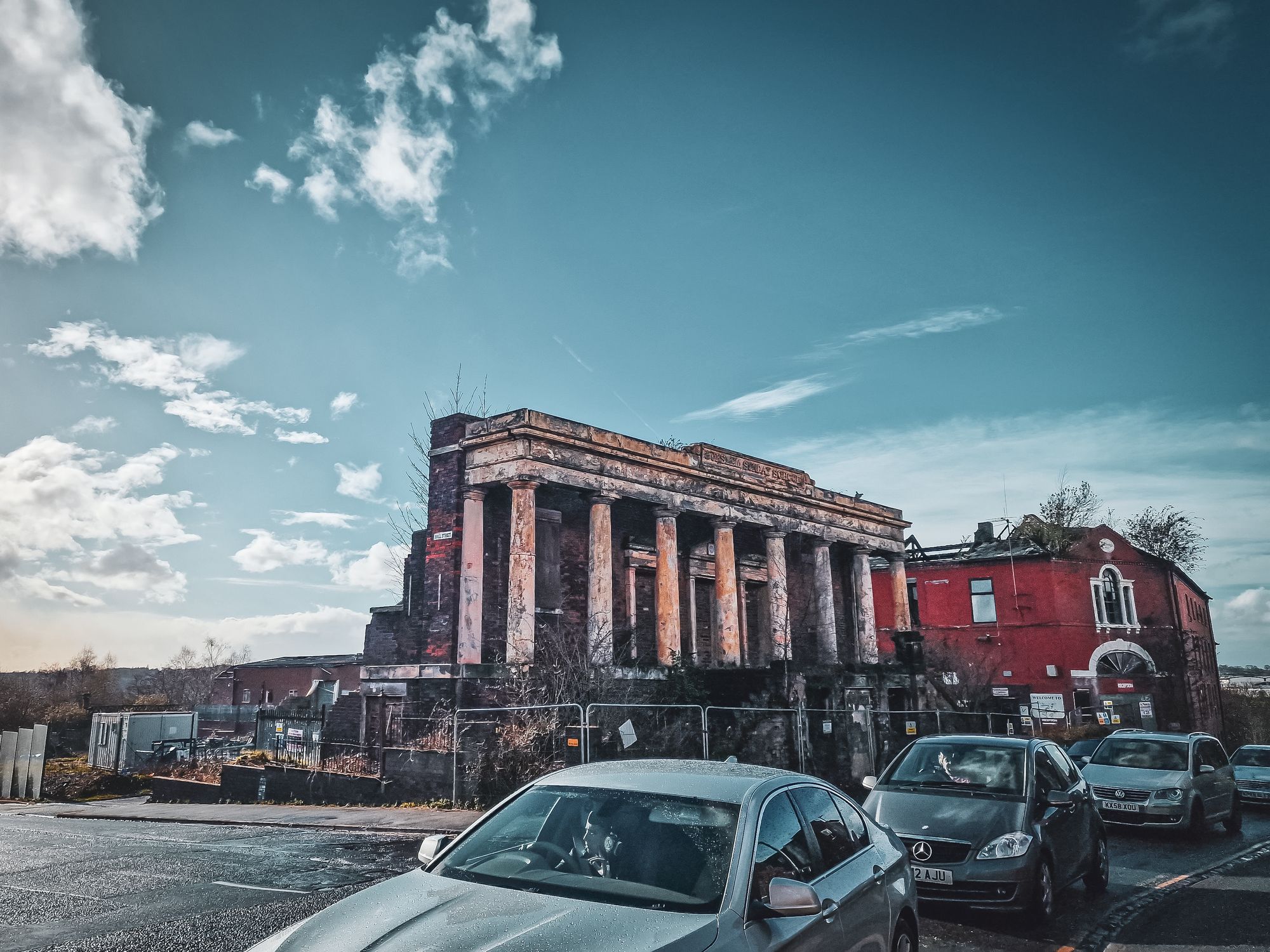
A different angle of the Sunday School shows just how large the building was. You can also see one of the entrances to Hill Works, which is now barely even a hollow shell of a building.
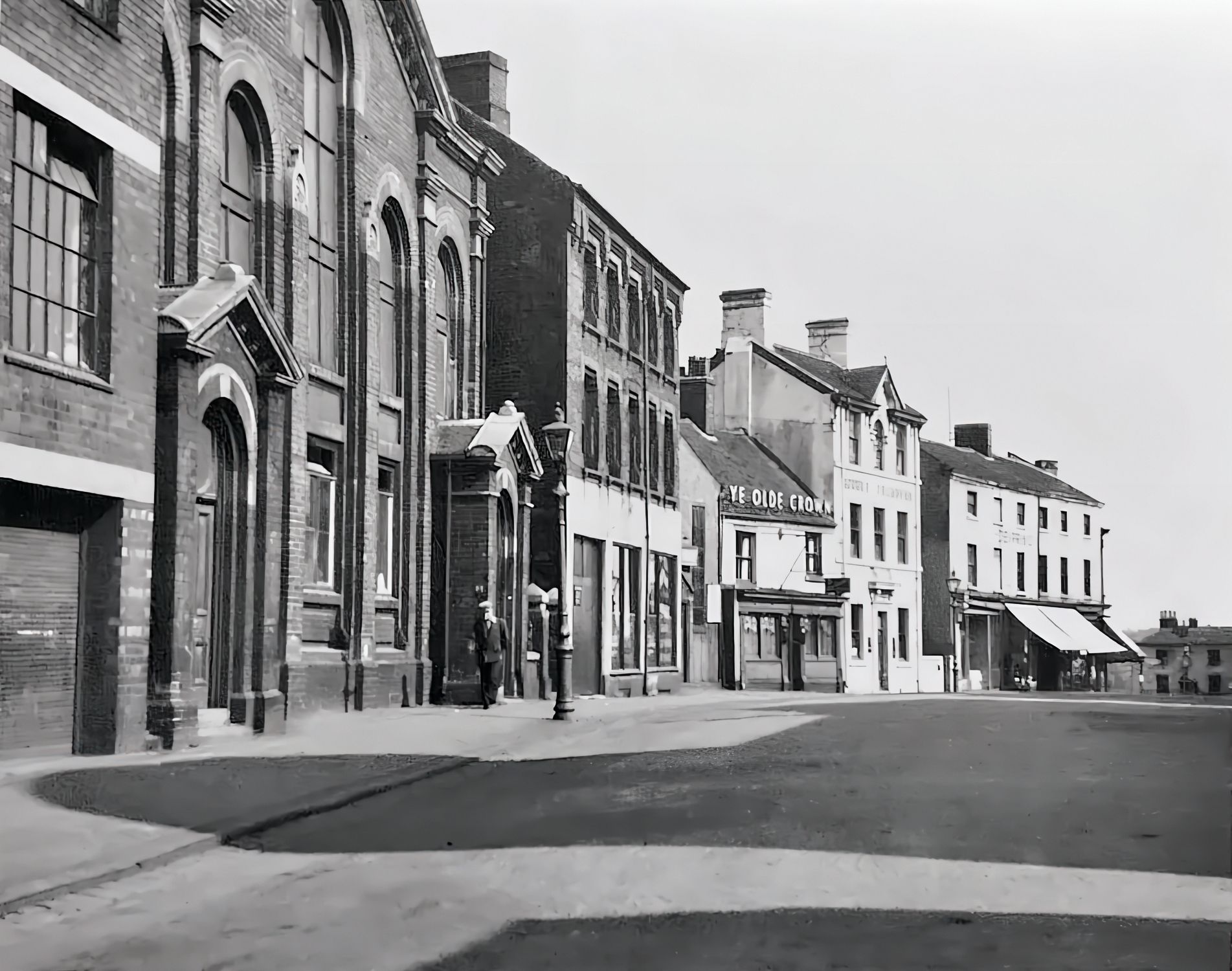
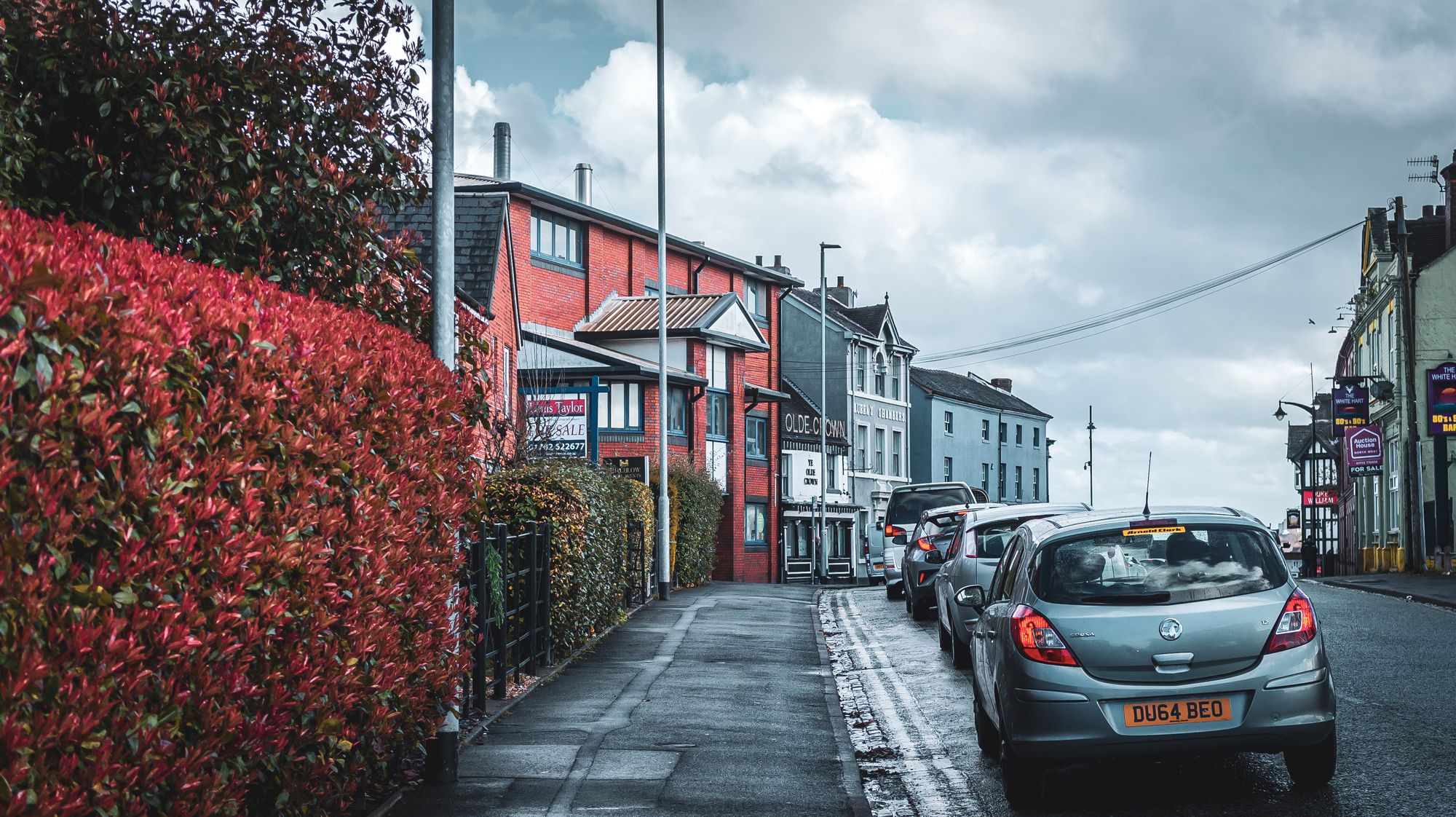
This view along Westport road shows a perfect mixture of historical buildings and modern replacements. You can still see Ye Olde Crown and the Queen's Chambers, which haven't changed, and the other buildings at the end. However, the large buildings on the left have been demolished and replaced with modern living.
Obviously, we now have modern traffic, unfortunately. I much prefer the roads back then!
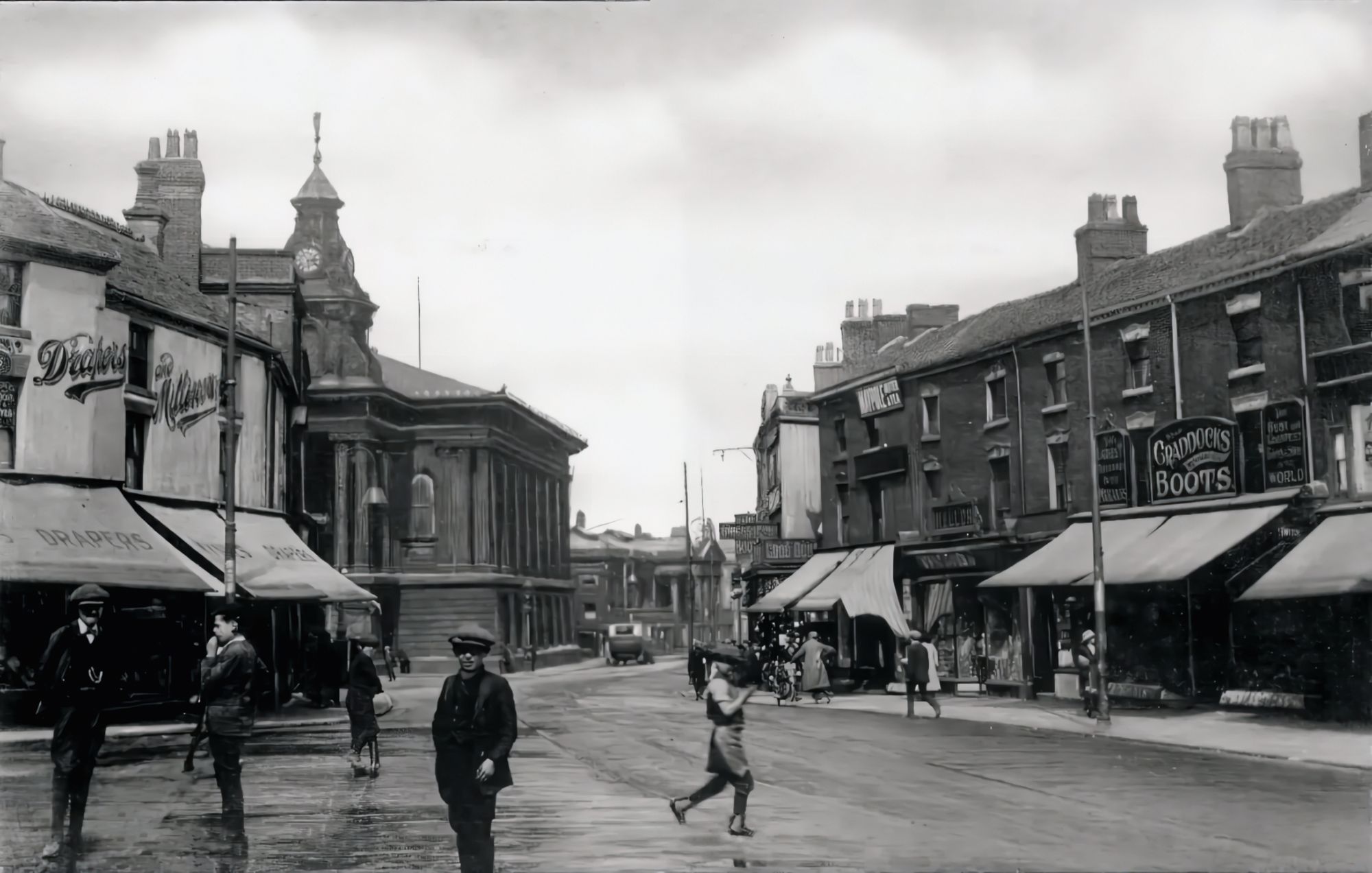
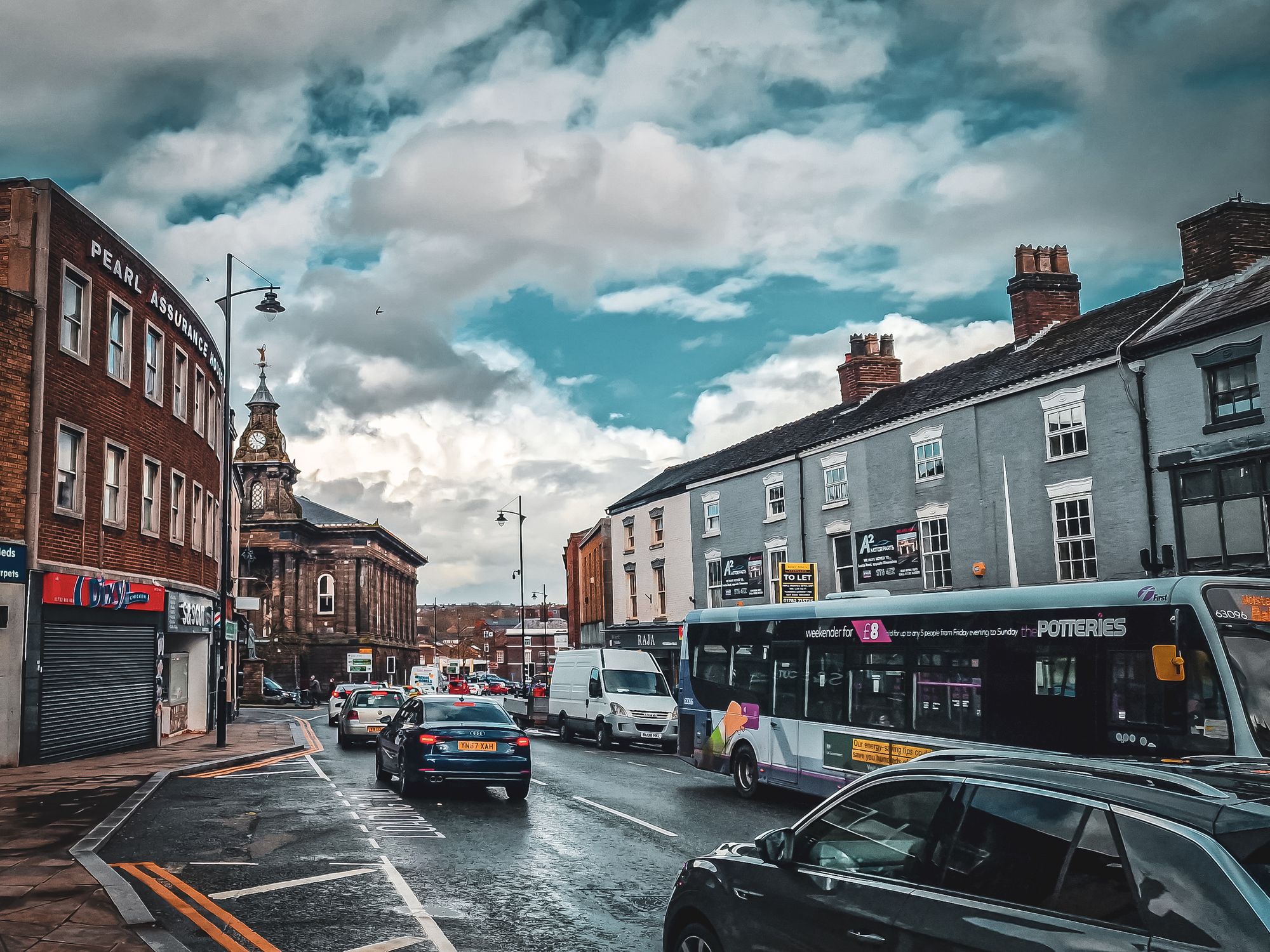
Now here is an interesting comparison. The majority of the buildings in these photos are still standing, from the shops to the town hall and the big house. The thing that fascinates me is the awnings on the outside of all of the shops. At what point did we decide that we didn't need shop awnings anymore?
Again though, I much preferred the roads back then! You don't realise until you are looking at the old photos, just how messy all of the road markings, signs and things make it look!
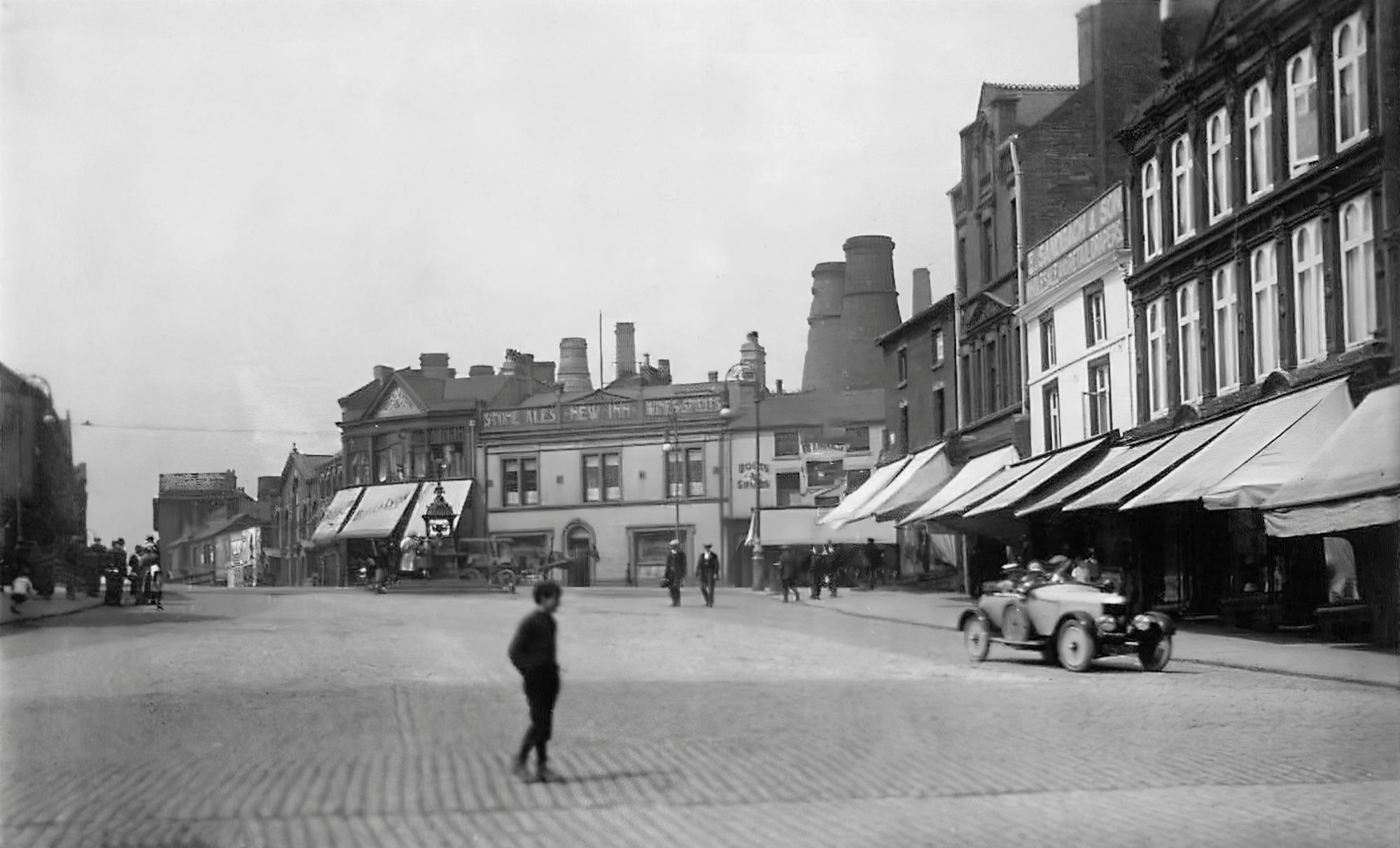
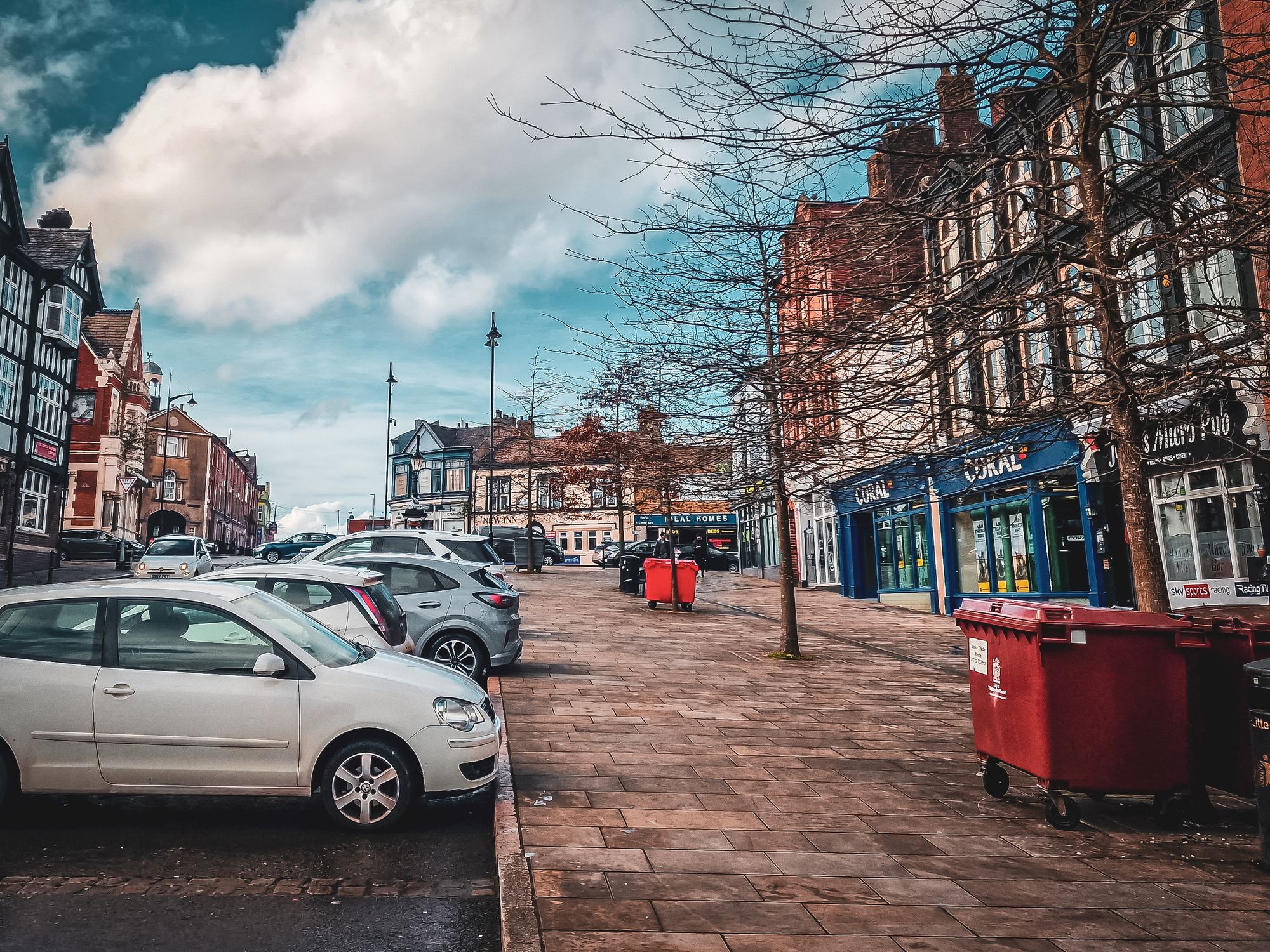
The old marketplace looks completely different to how it did over 100 years ago. Or does it? The only things that are actually different are the bottle ovens are gone, the awnings are gone and there are cars and wheelie bins in the newer photo.
If you actually look closely, nearly all of the buildings in the old photo are still standing in the new one.
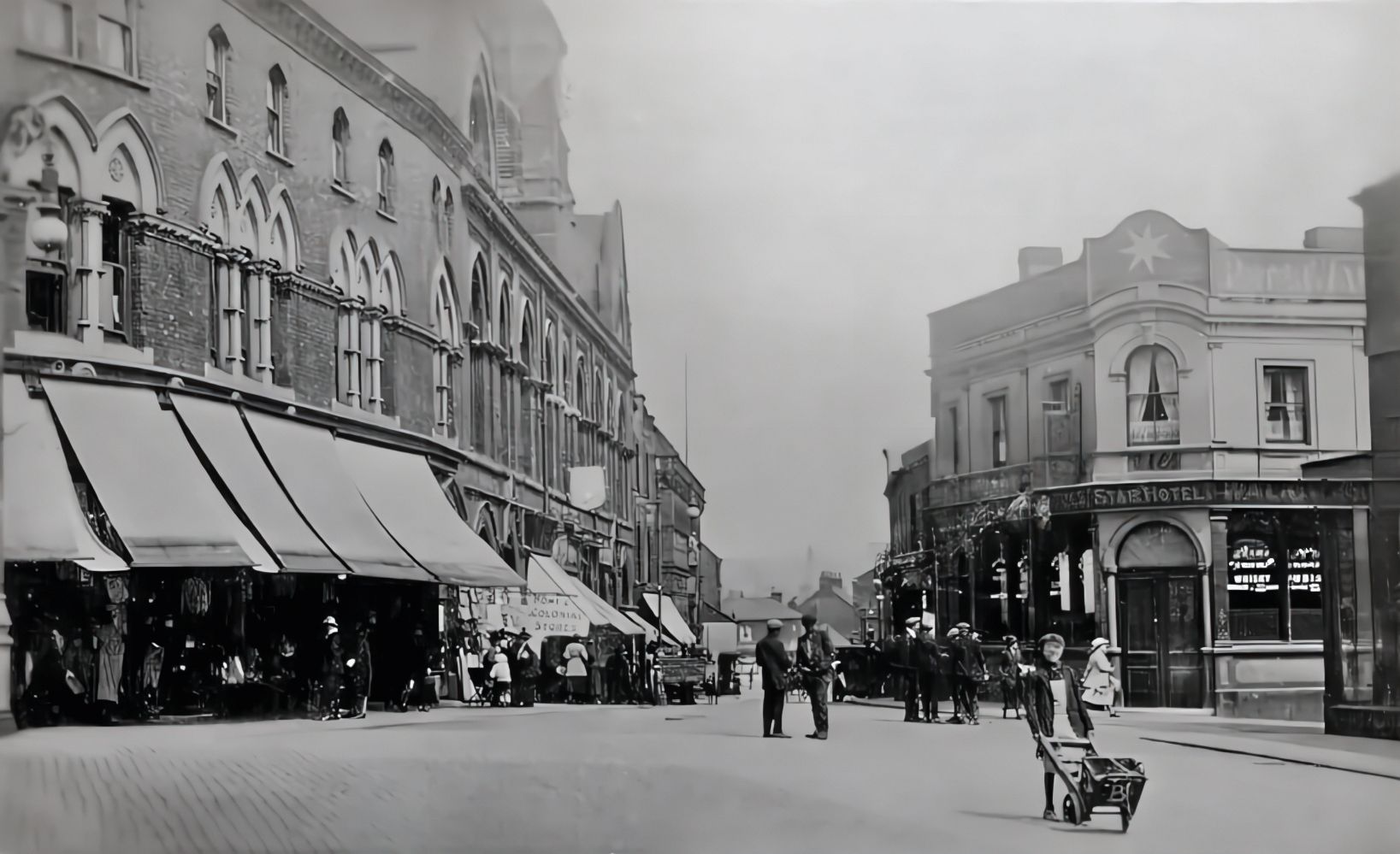
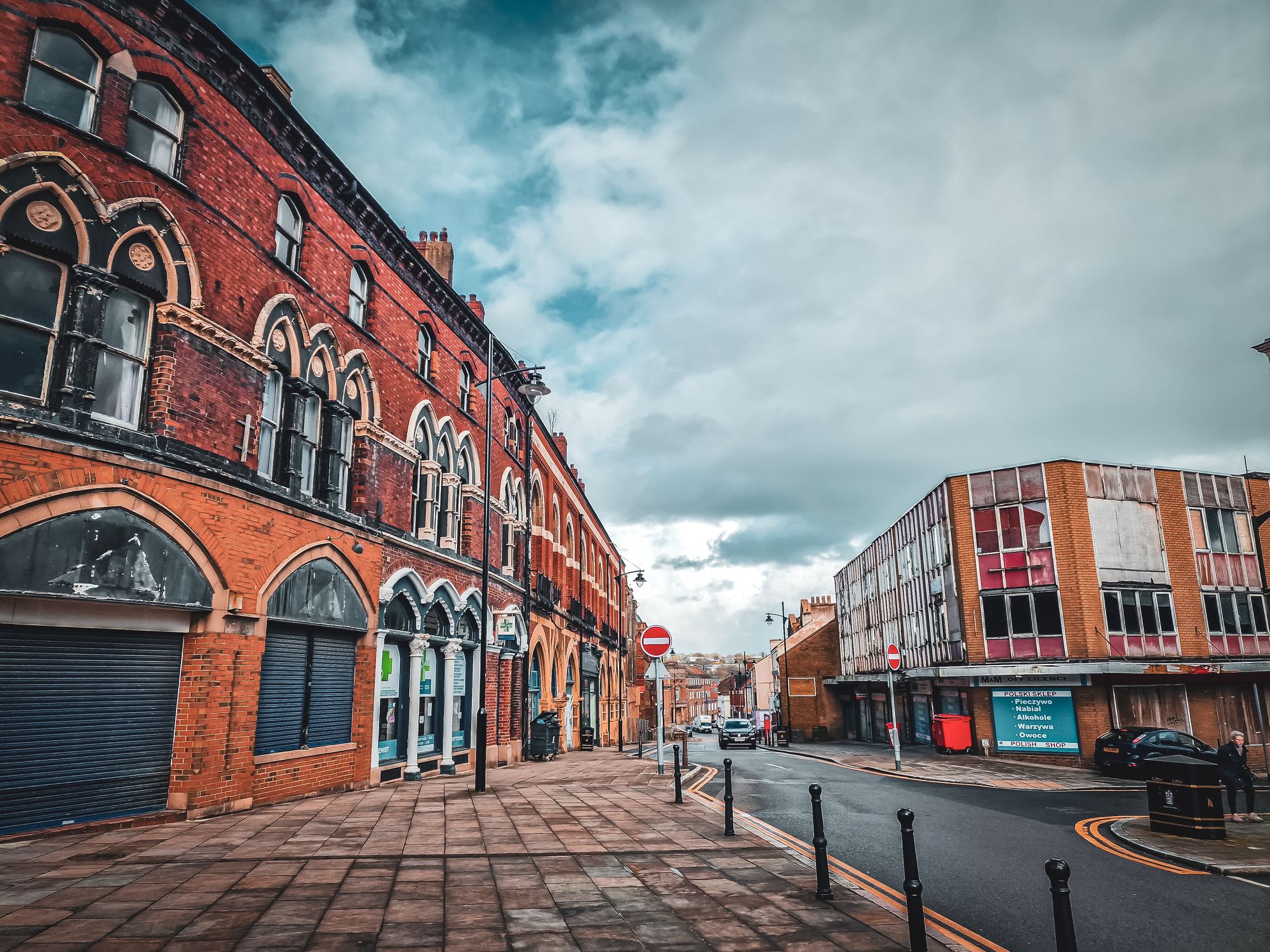
Queen Street was once known as Lower Street and the huge building on the left still stands. It is a truly stunning building that unfortunately needs more love than it is currently getting.
The shop on the left was Hammersley's Drapers and the building on the right was the Star Hotel.
Apparently, the building is there same, it is just the facade that is different, but I'm not sure I believe it.
Who would be daft enough to change that lovely old building and replace it with that horrible 'modern' facade?
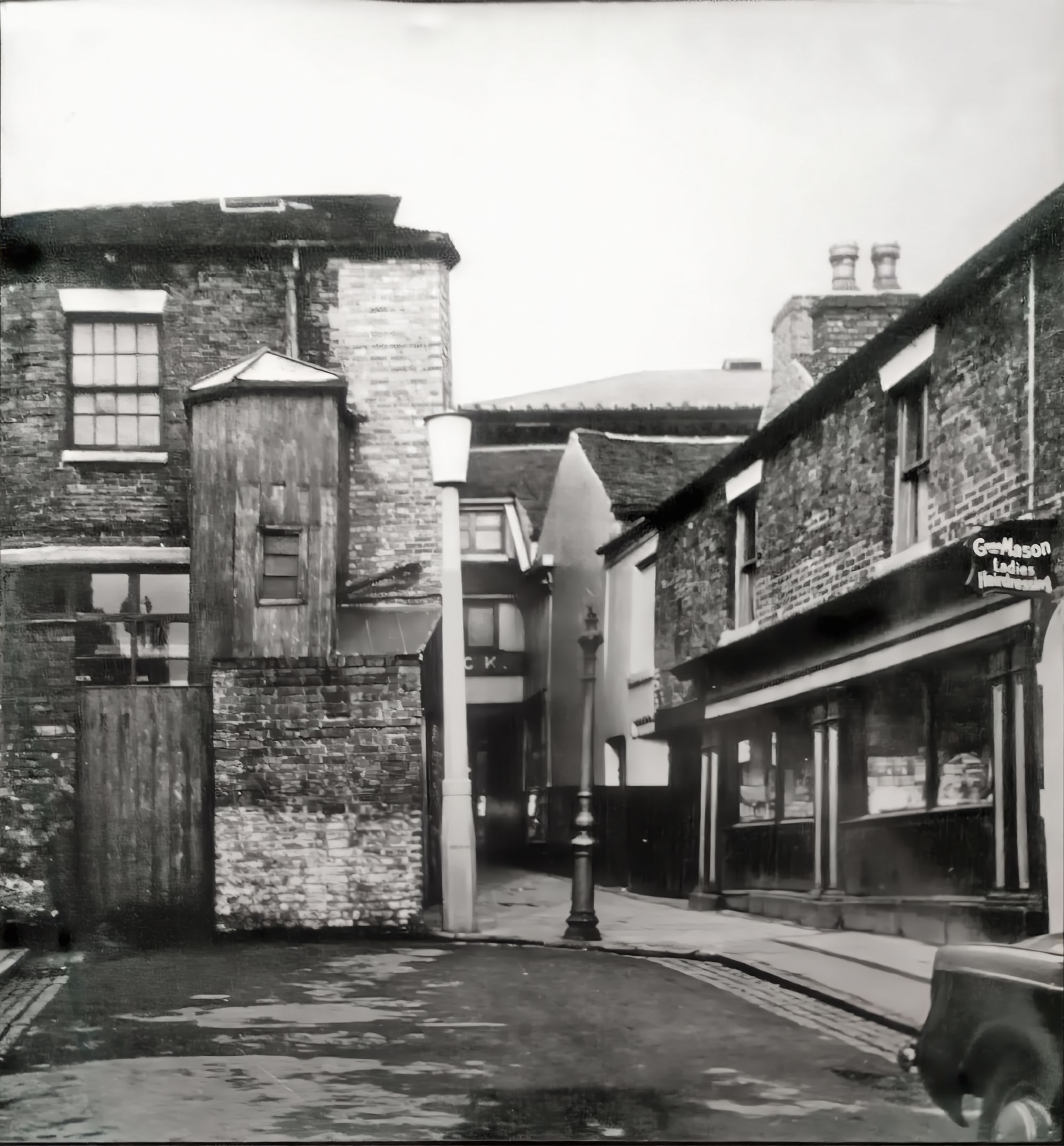
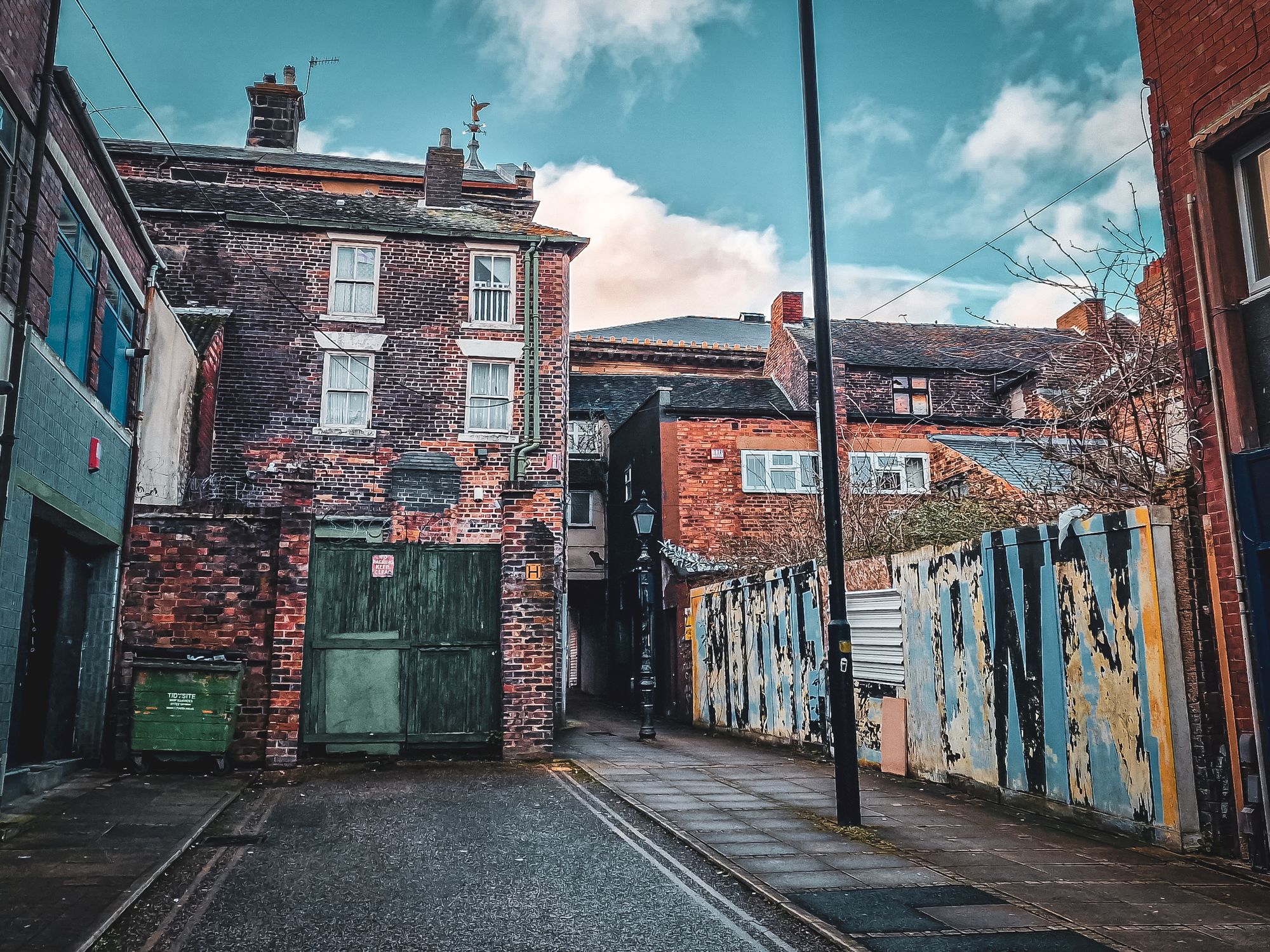
Cock's Entry is an alleyway that leads from Brickhouse Street to Market Place. It garnered the name during the 1800s when cockfighting was a popular pastime because it was a dark and hidden alleyway to meet.
It isn't a very nice place anymore, nearly all the buildings down there are empty and derelict.
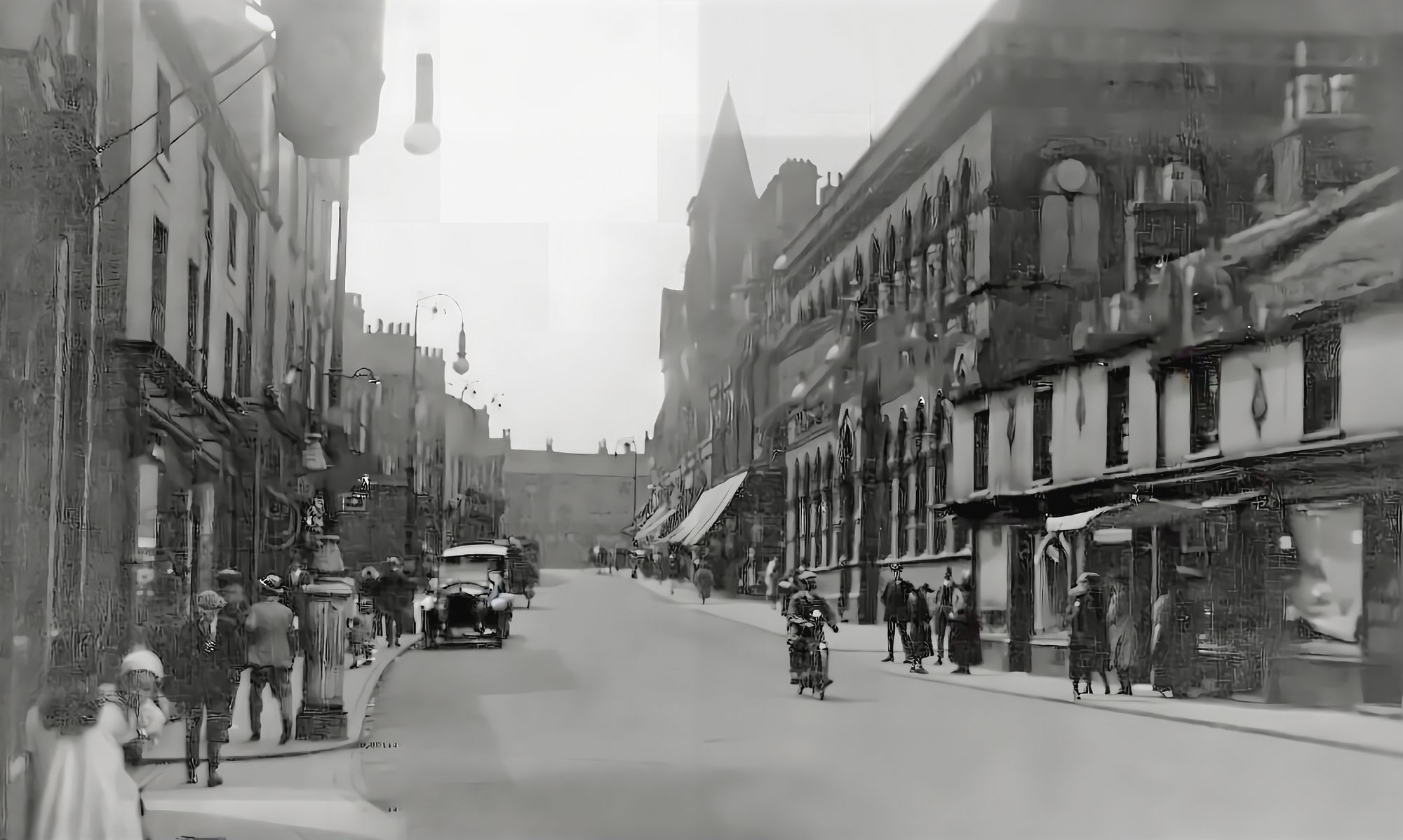
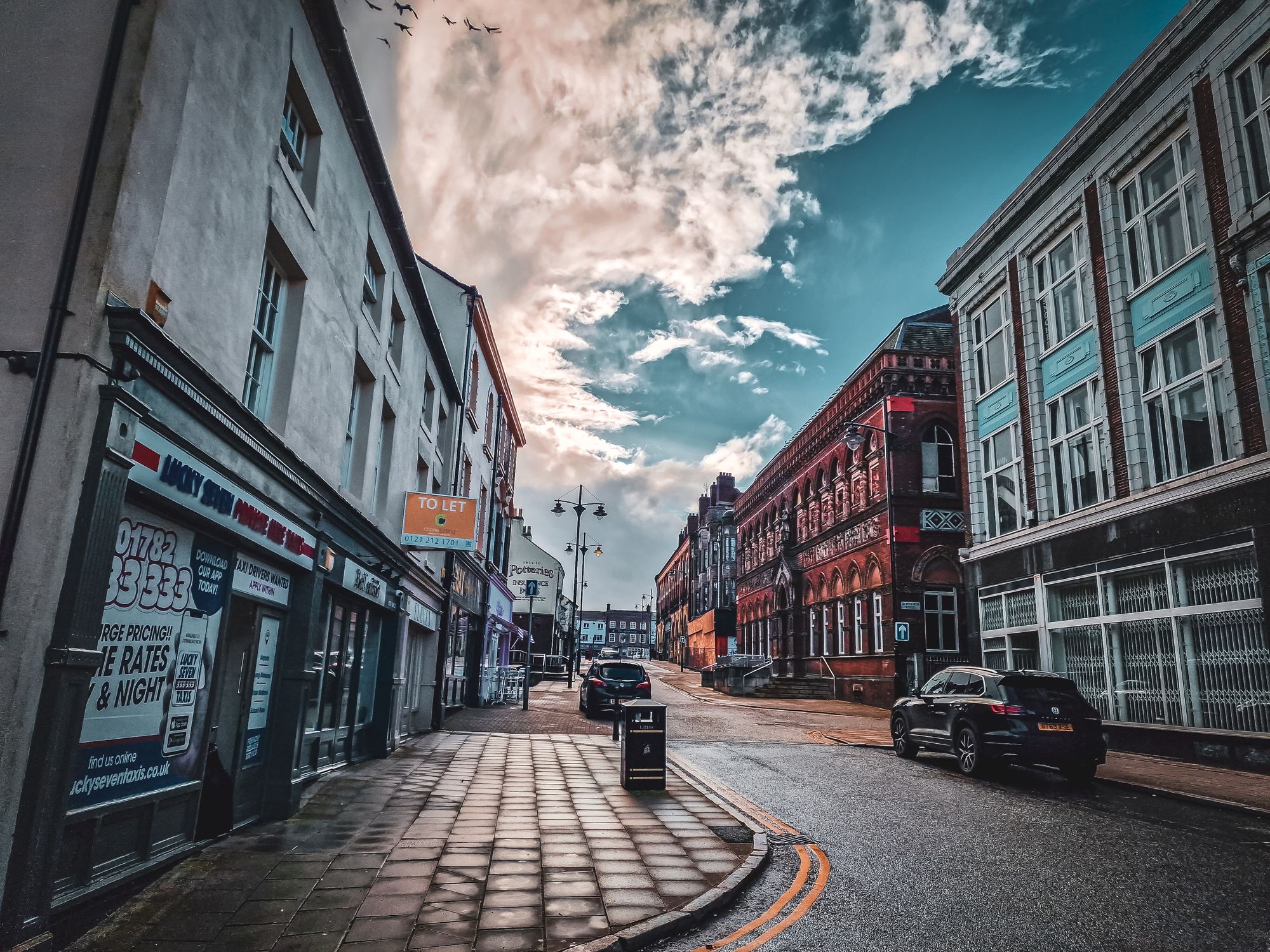
This is a great view of Queen's Street. It shows the Wedgwood building on the right and nearly all of the other buildings are still standing too. The biggest difference is the erection of the art deco Co-op building on the right.
The saddest thing though is that this was a busy and bustling street 100 years ago, with shops and businesses all the way along. Whereas now it is just a through route, and many of the buildings there are empty and derelict, in need of restoration.
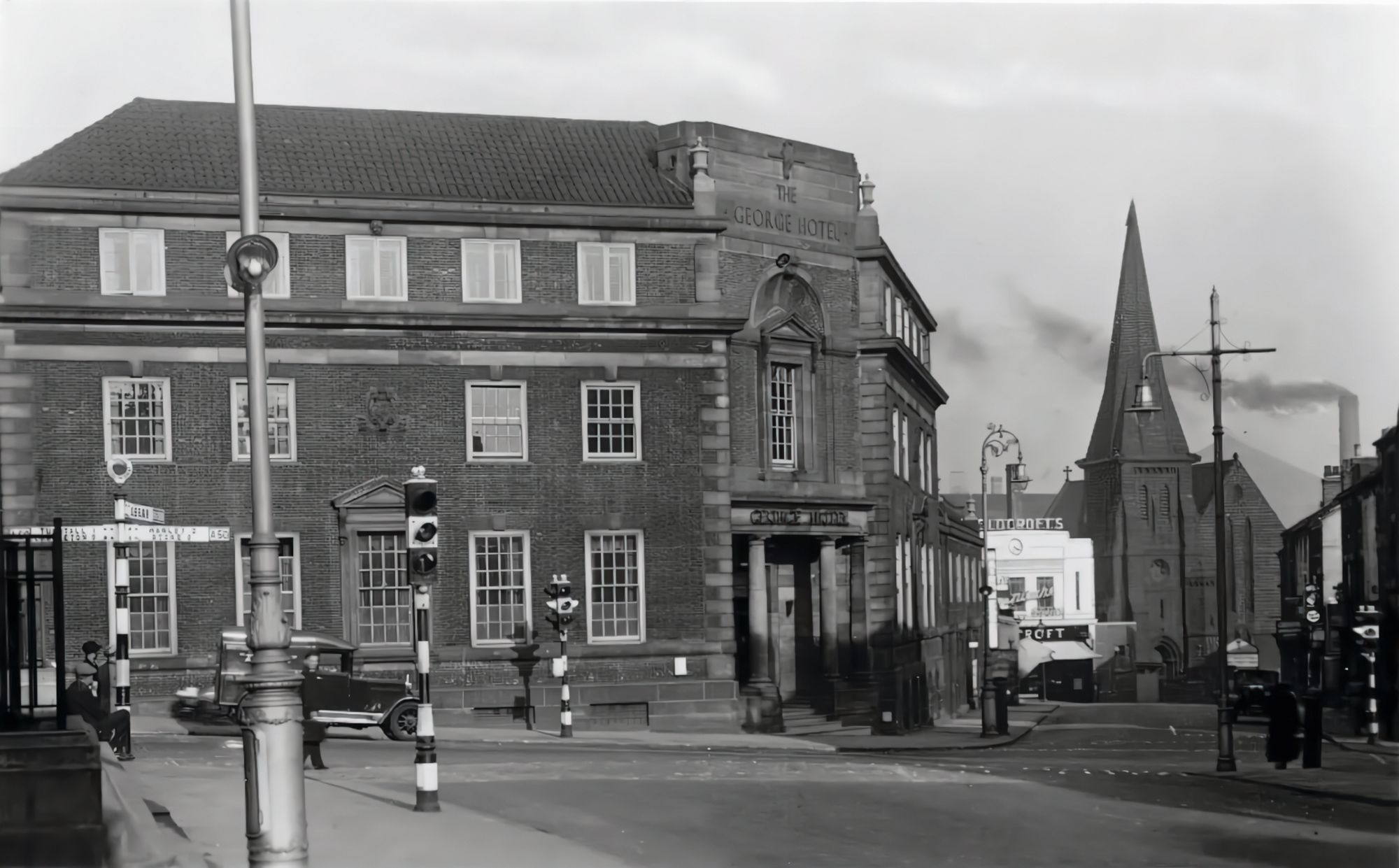
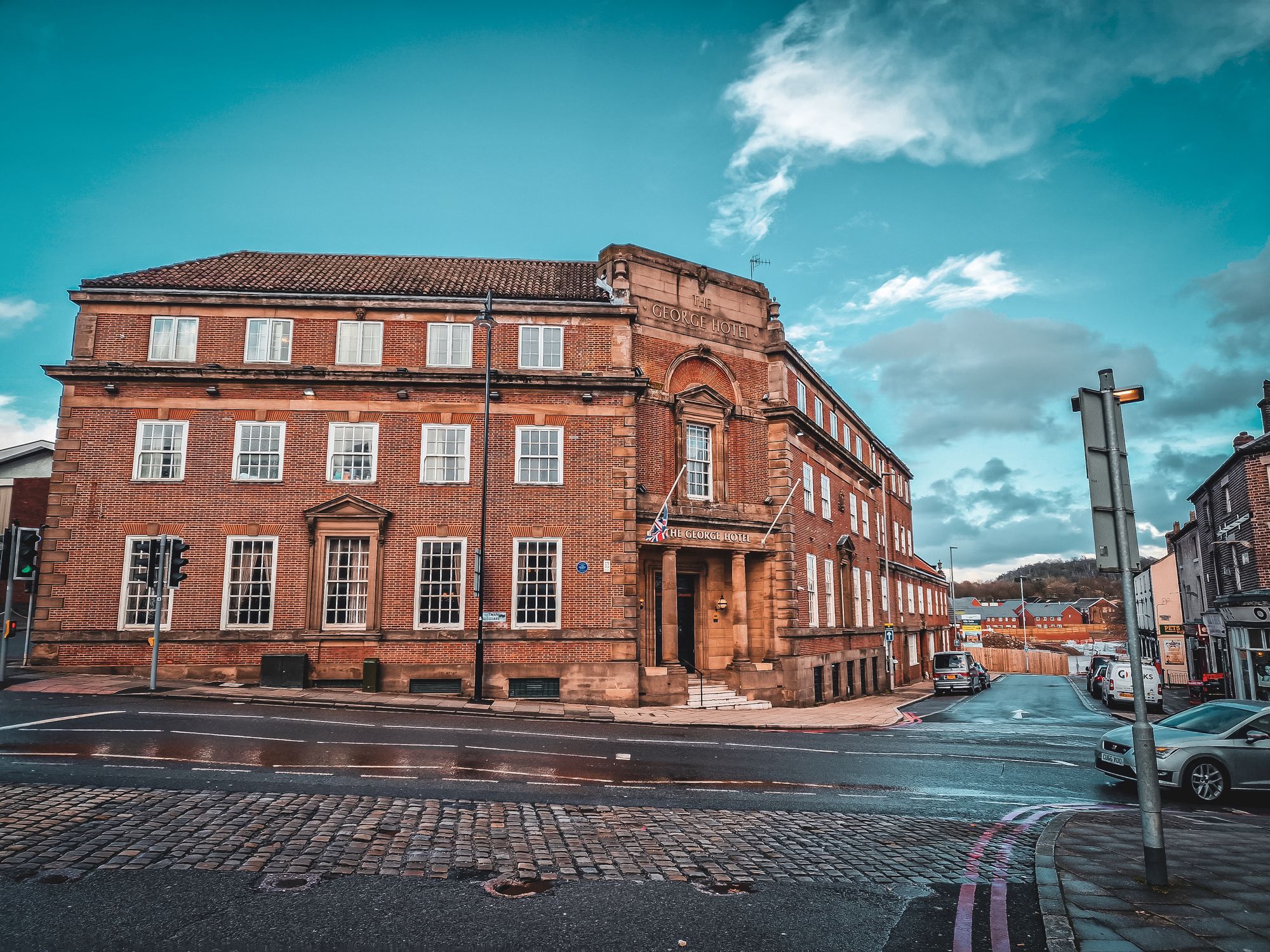
The George Hotel is one of many variations of the building. There has been an inn or a pub on the site since the 17th century and the one before this burnt down in 1926.
This building was built in 1929 and was expanded in the 1950s.
The church that can be seen in the old photograph is the Holy Trinity Church. It was demolished in 1959.
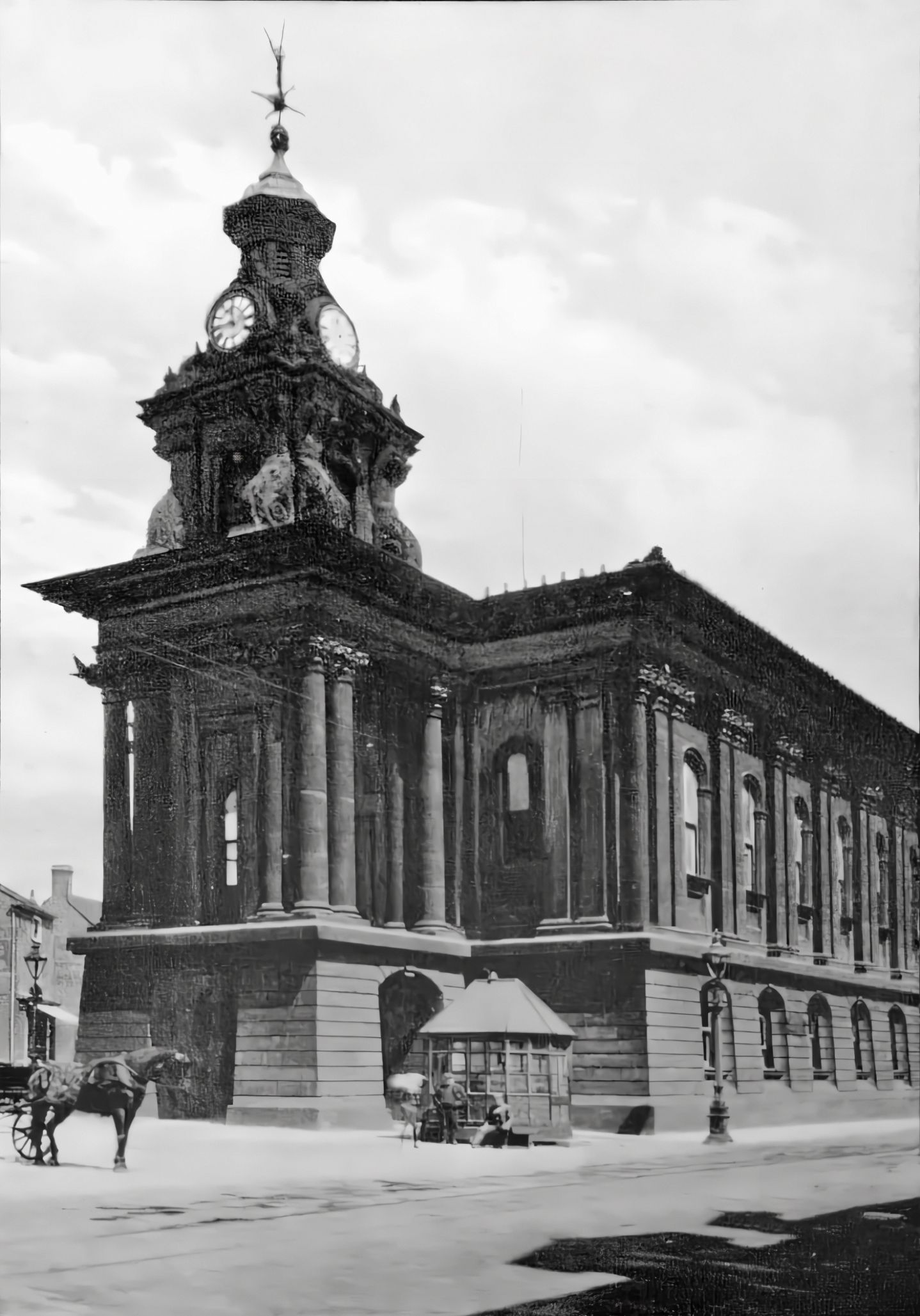
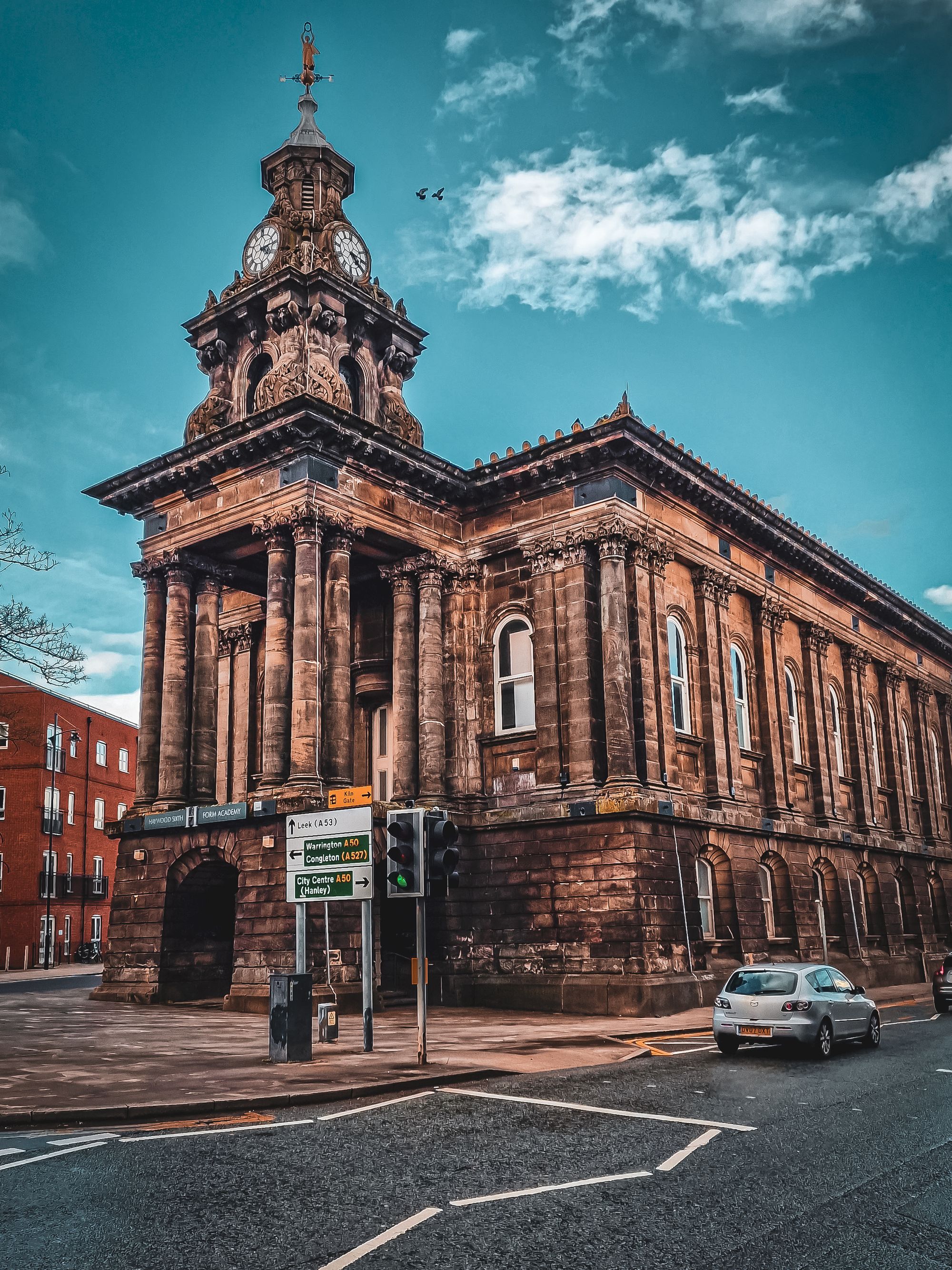
I've got to be honest, this old photograph of Burslem's stunning town hall is by far my favourite. The little building that you see in front is a cab stand, a place for the cab drivers to wait for a fare. This, the horse waiting and the gas lamps just make it a perfect Victorian photograph.
And it also shows that the pace of life was much slower back then, everyone and everything is in such a rush nowadays. So many people sit in traffic next to the town hall, and I wonder if they ever really look at it.
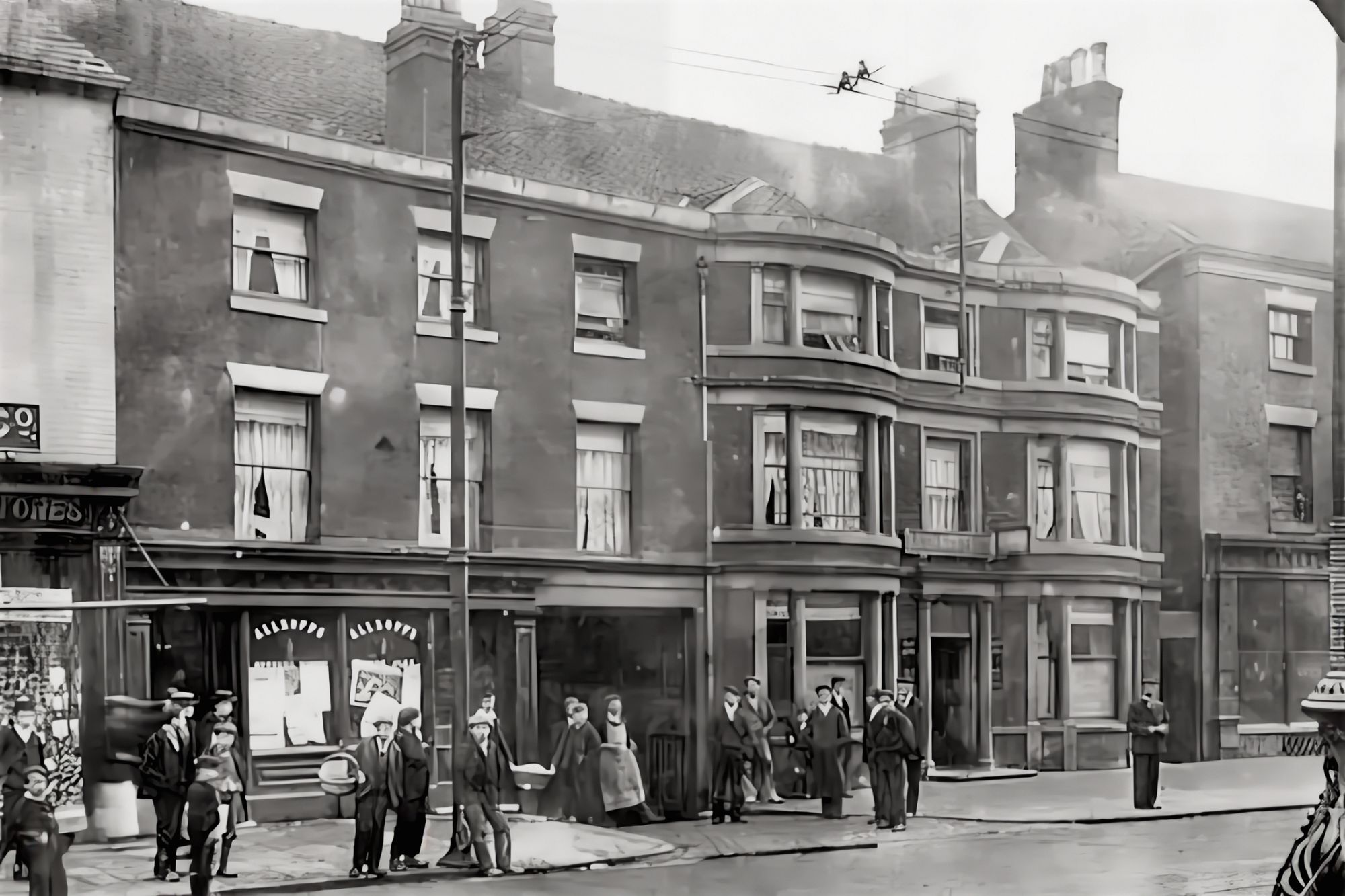
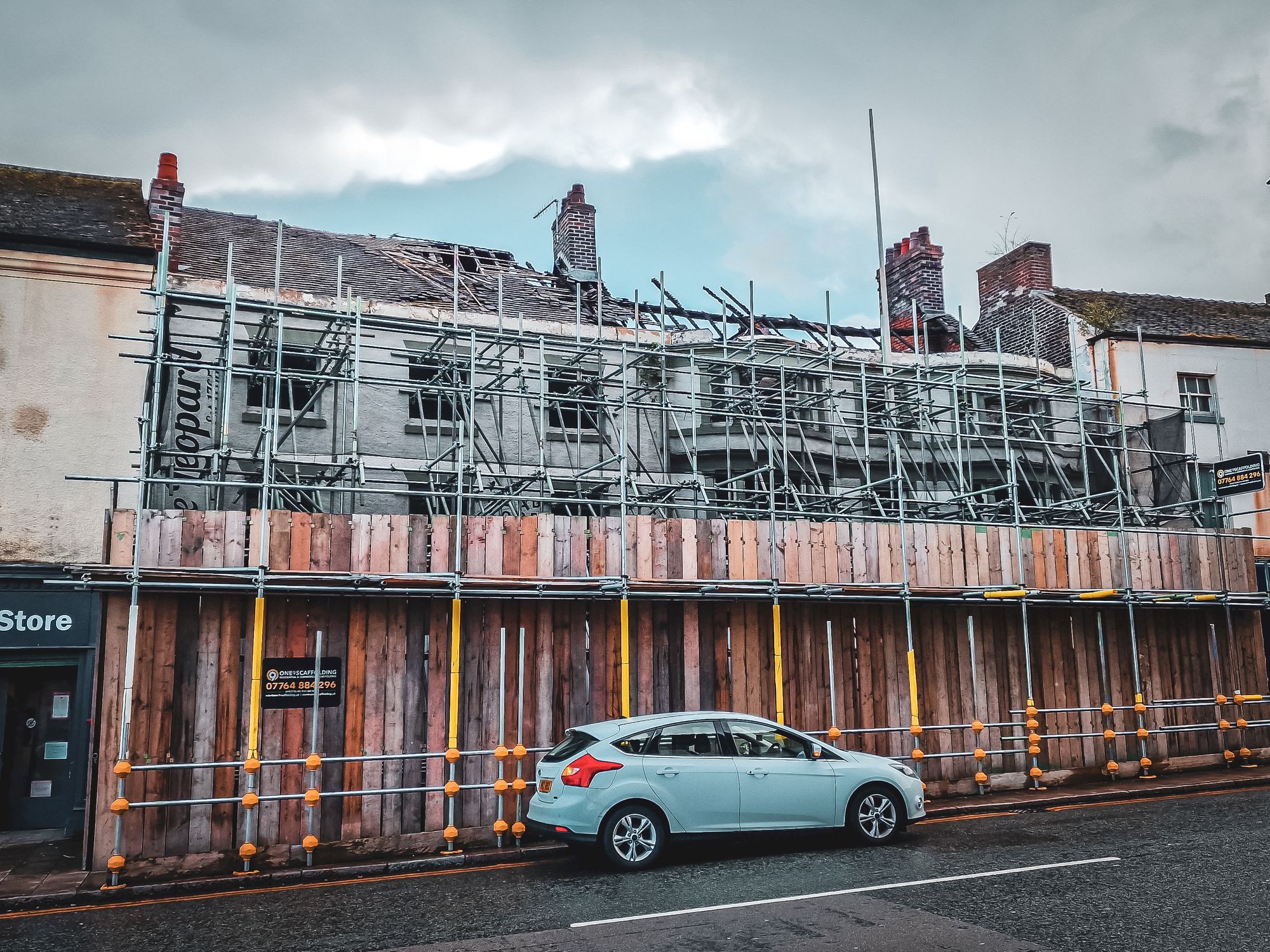
This one is painful. I don't even feel the need to describe The Leopard. Everyone is so angry and upset, not just that the building was destroyed, but that it is still in the same state. It just seems to have been forgotten.
If you would like to read my comprehensive history on the Leopard you can read it here - https://www.theredhairedstokie.co.uk/theleopardburslemend/
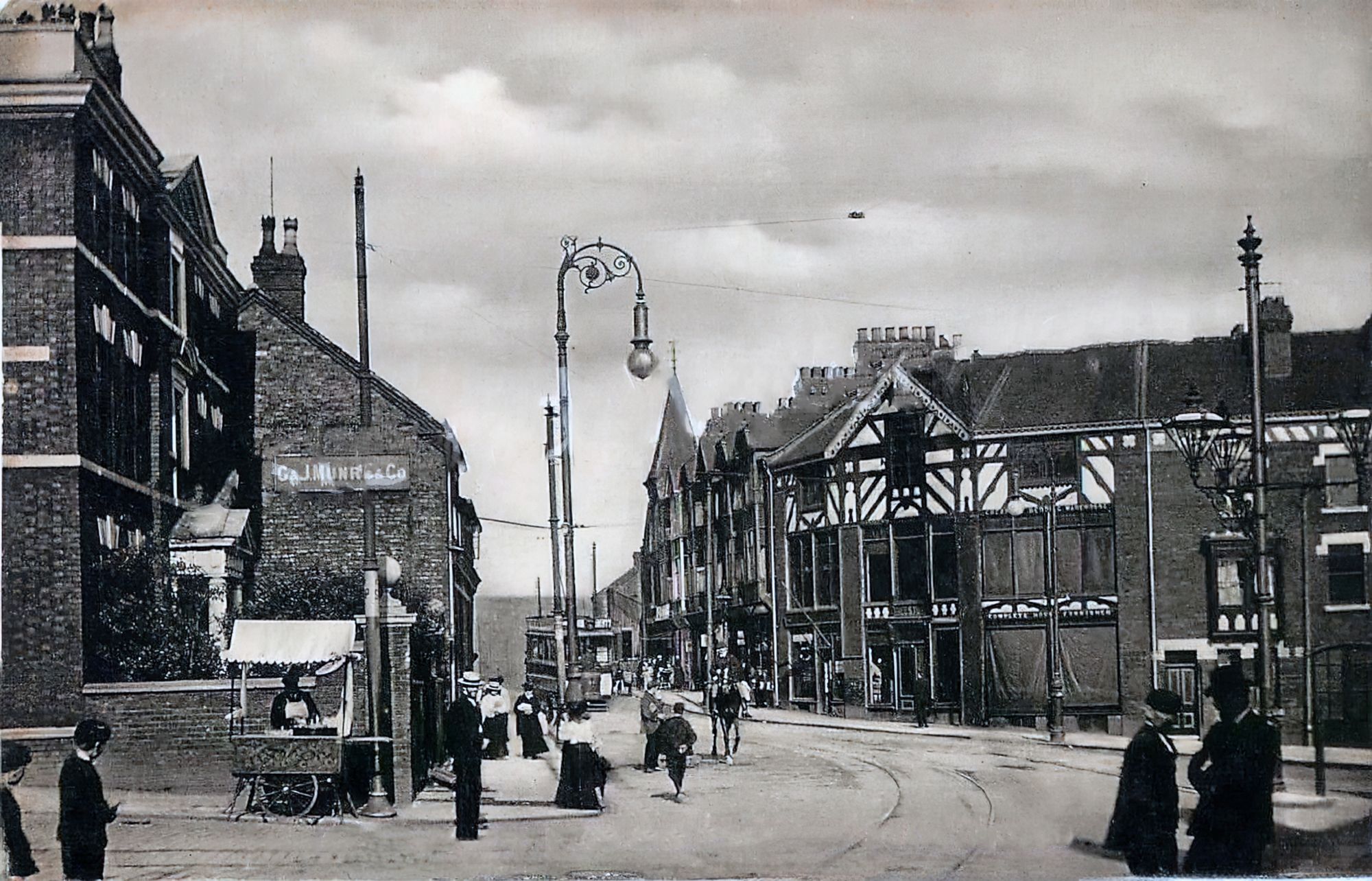
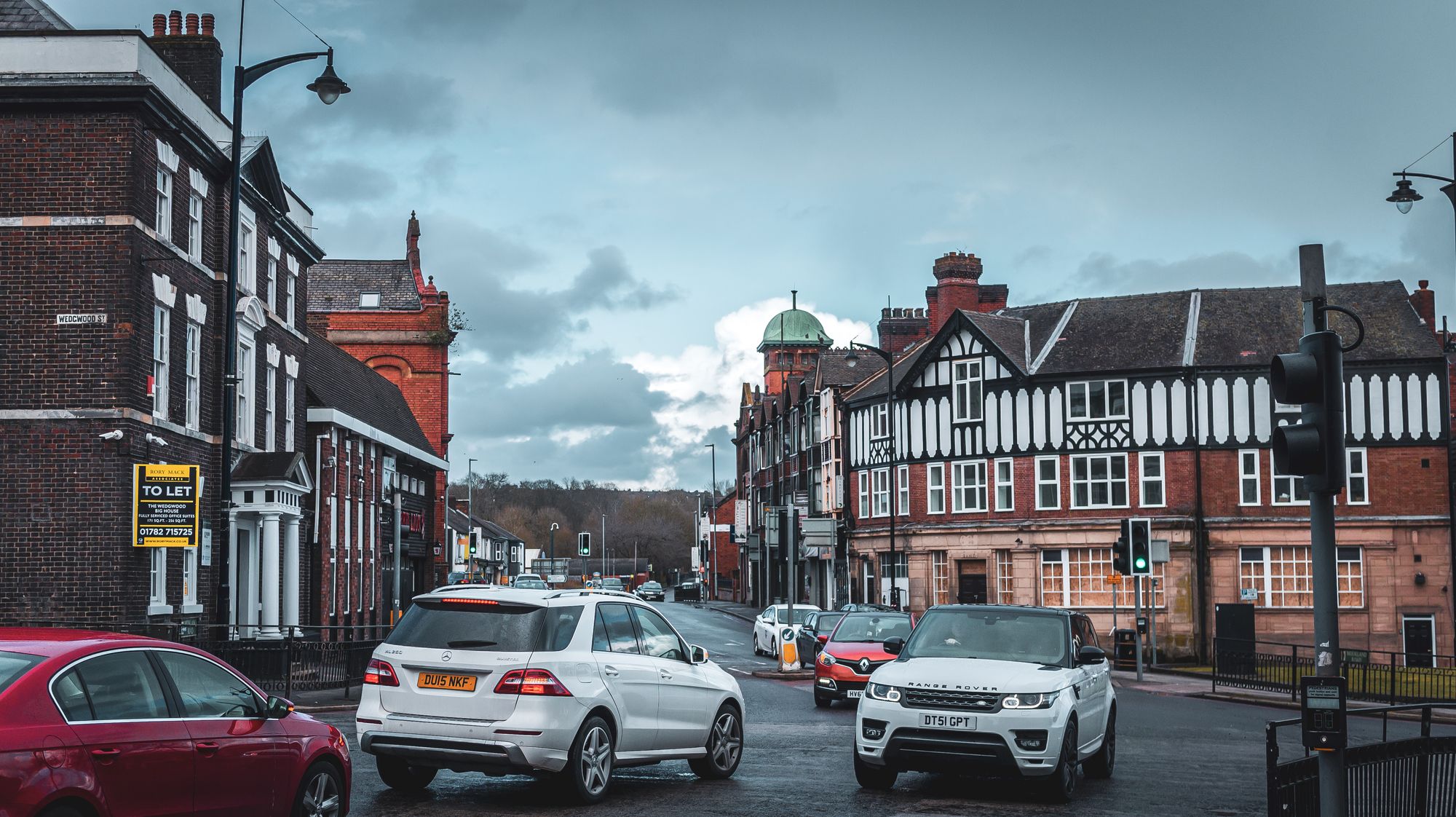
Now I have to admit, I didn't know that the Big House originally had a wall and a garden at the front of it! It does just show though, just how much room the roads are now taking up.
A few things I like in the old photo are the tram trundling down into the town, the man on his horse just riding into town and what looks like a man selling maybe ices on the bottom left against the wall of the Big House. It seems like a hot day as the women are walking about in just their shirts.
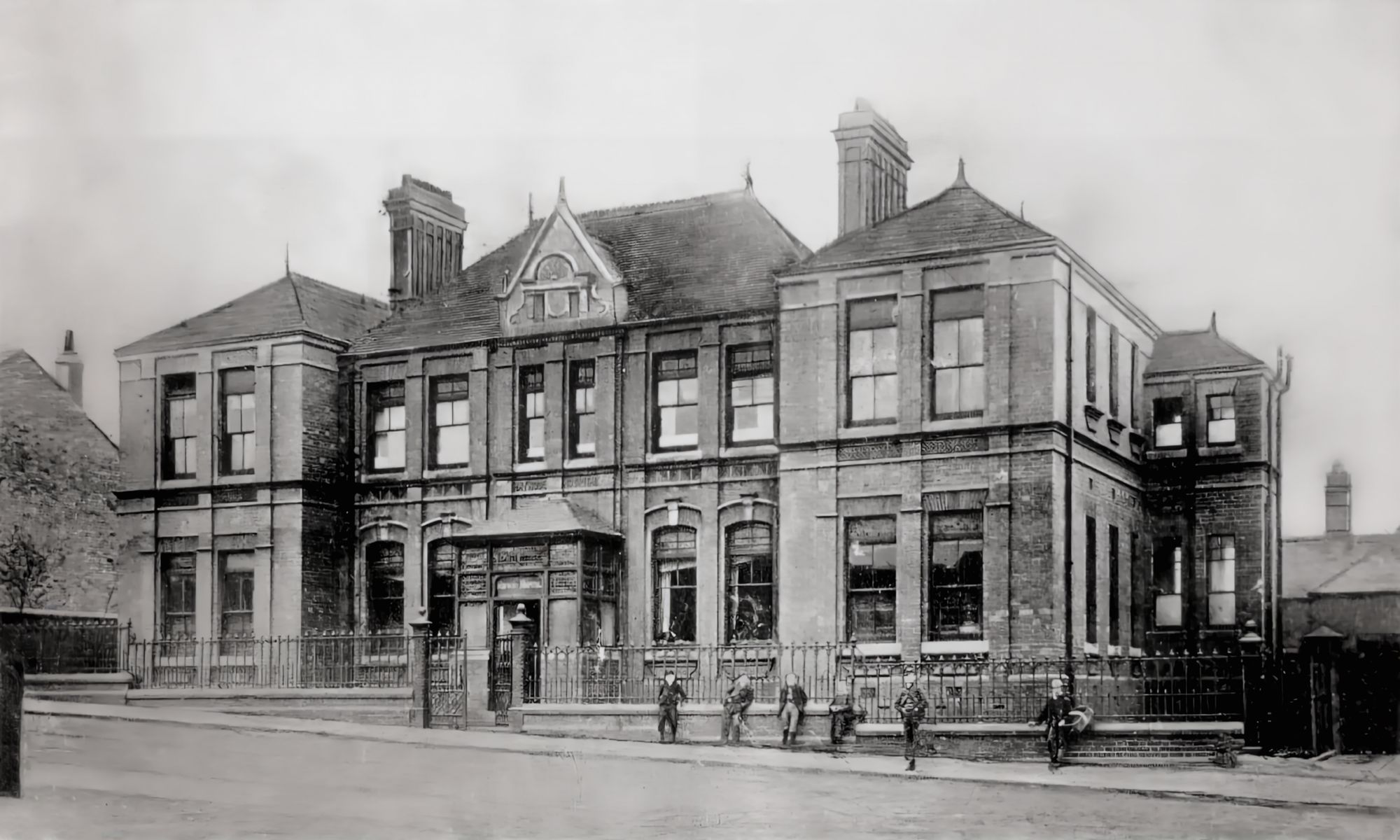
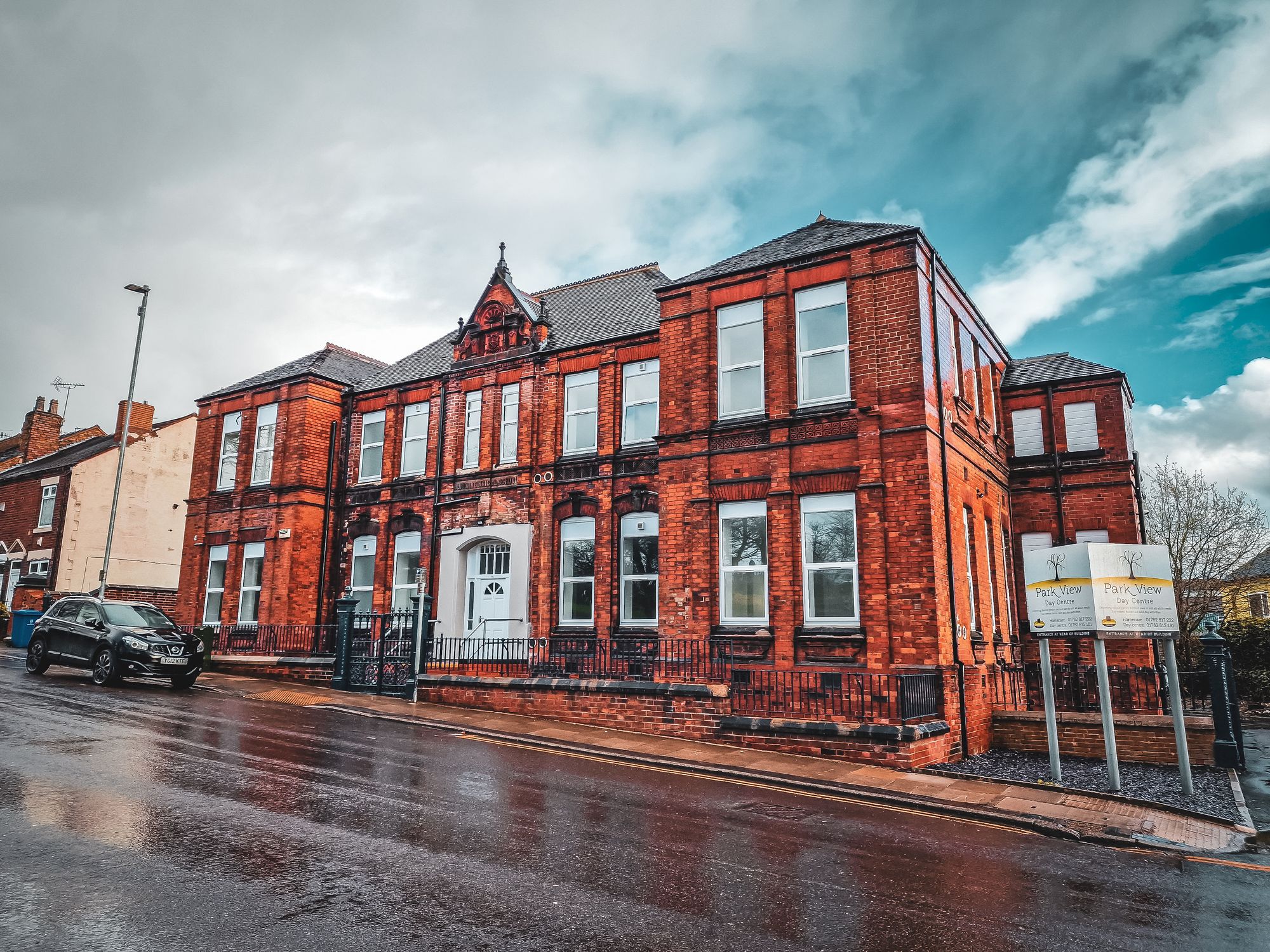
This building was originally, in 1887, the Haywood Hospital. It had wards added in 1889 and 1907. It was converted into a school in 1932.
It had extensive renovations in 2007 and the extension at the back was unstable so it had to be demolished to save the front of the building.
Luckily it was saved and although it has been quite a few things since then, it has been well looked after and we still get to enjoy this stunning building. Although the porch has been removed, which seems a shame.
Thank you for reading!
If you like what you have read, please feel free to support me by following and signing up for my newsletter and/or buying me a coffee!
Thank you.

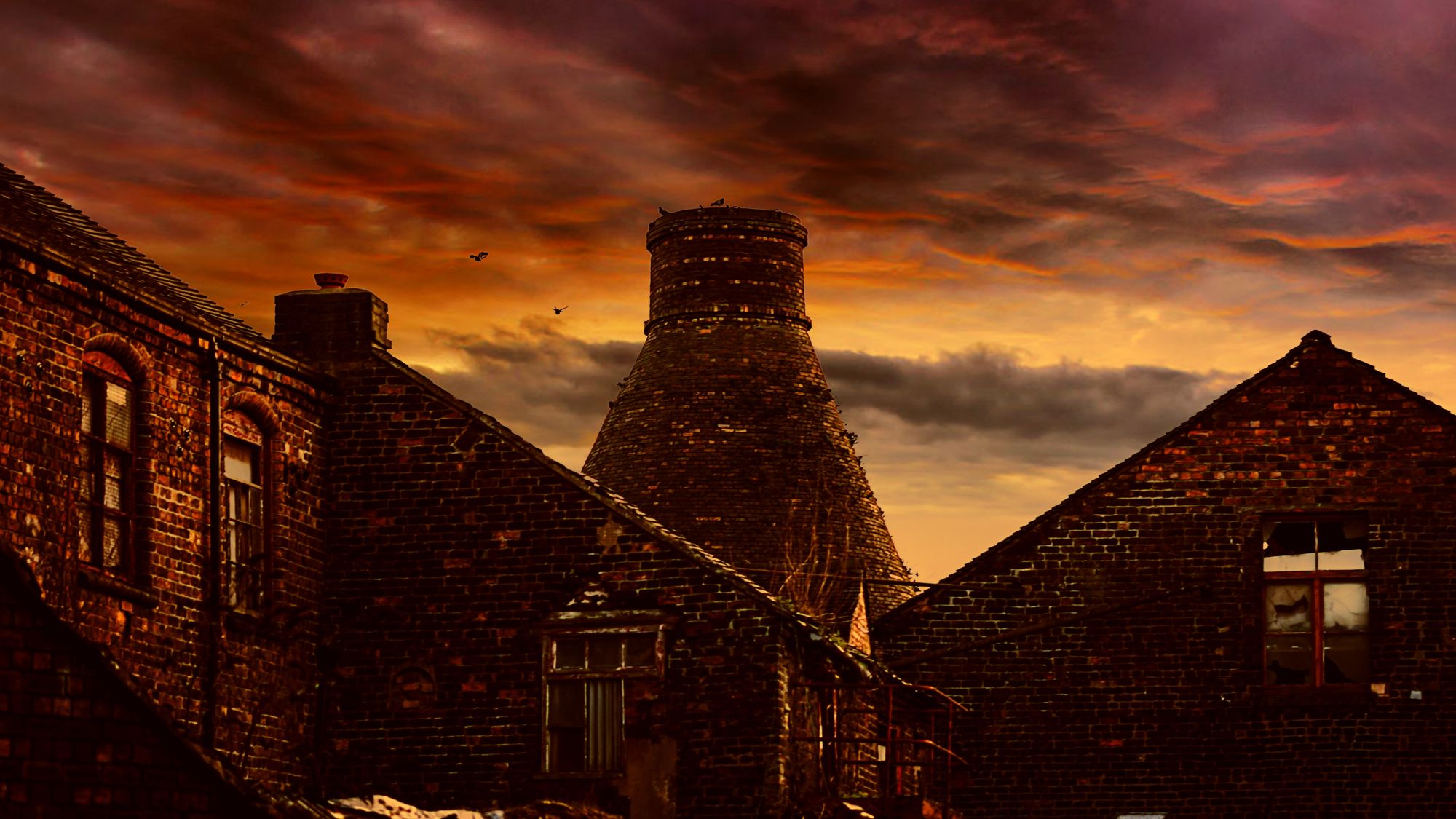
If you are interested in the history of Burslem then check out these books on Amazon.

